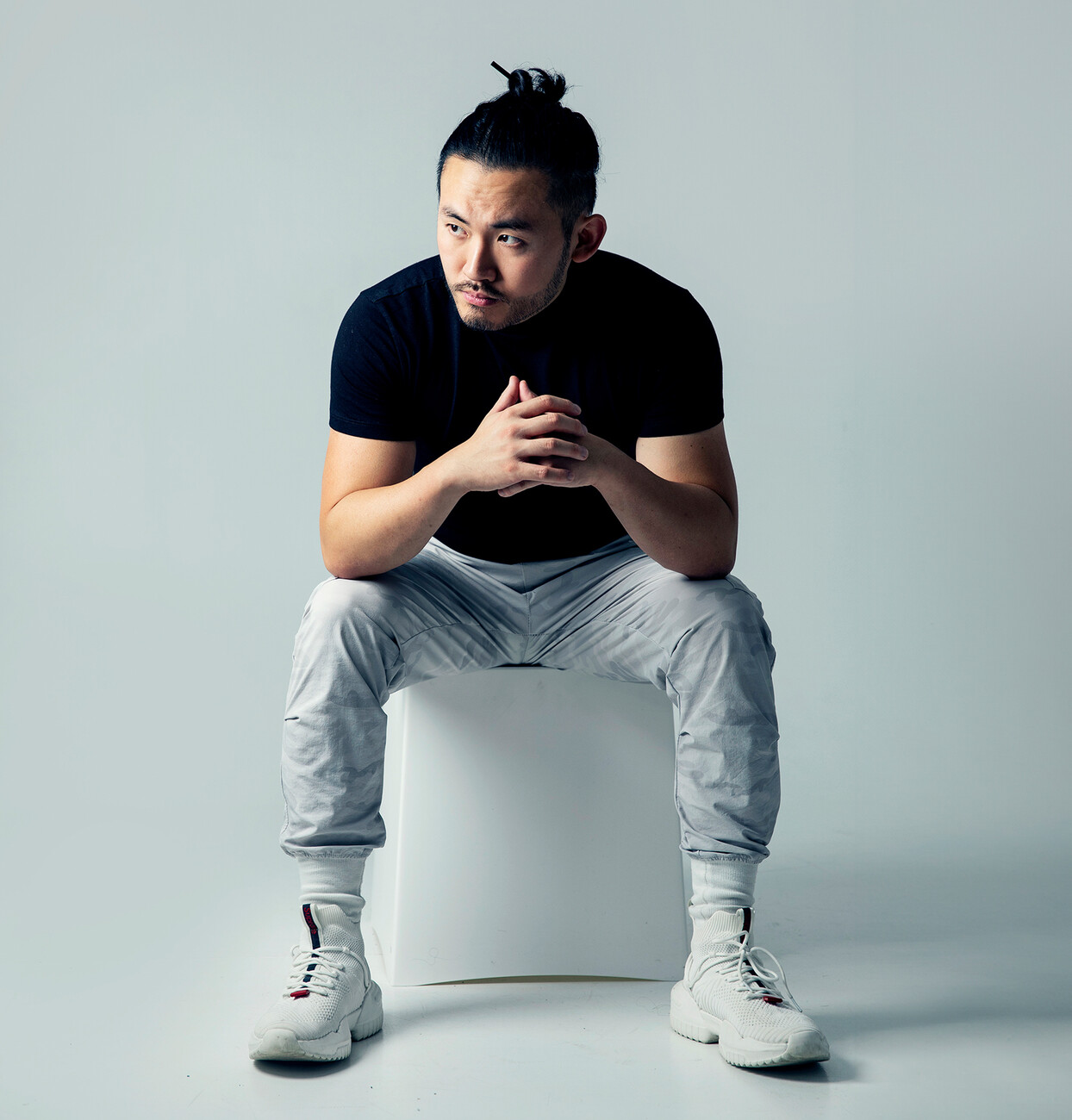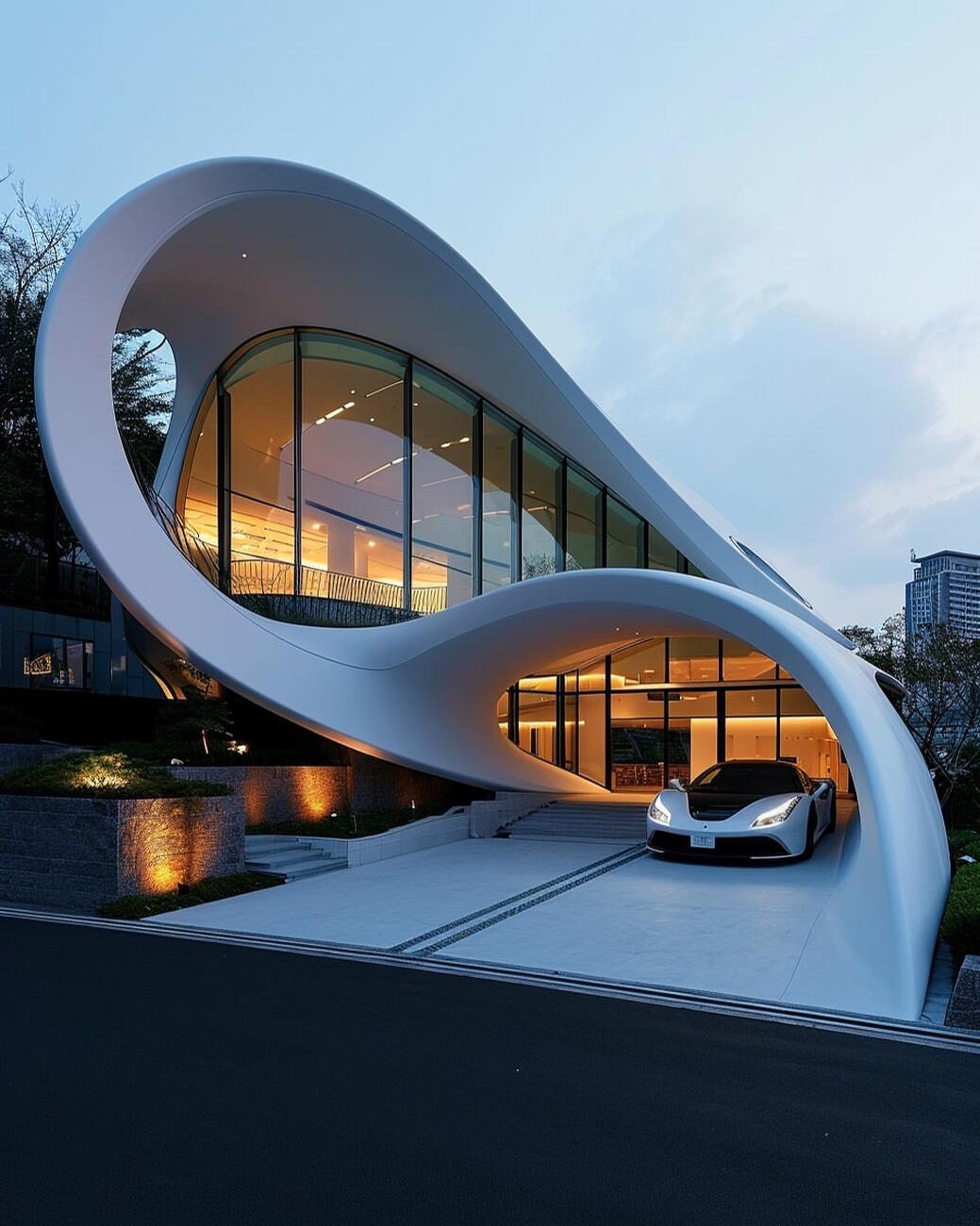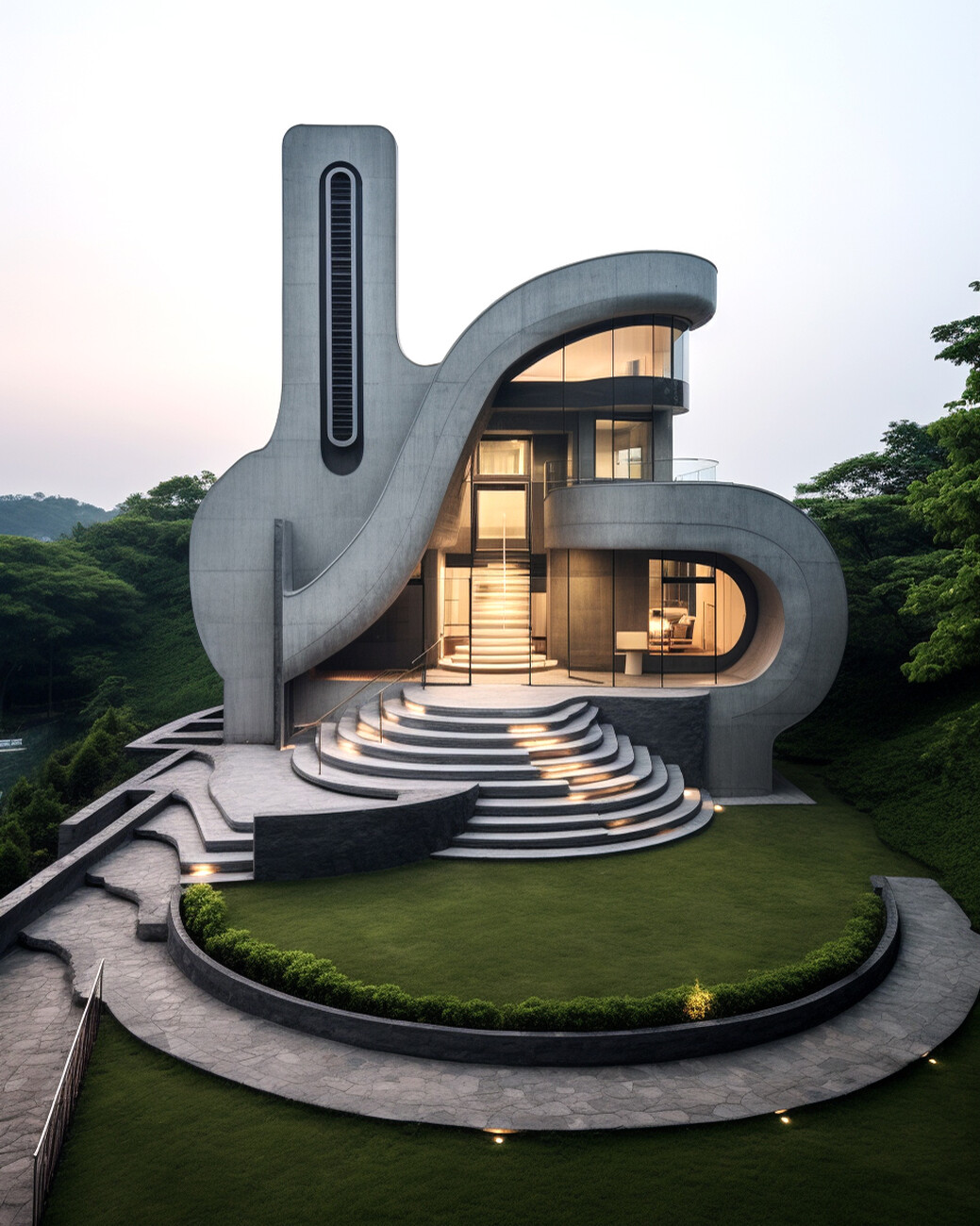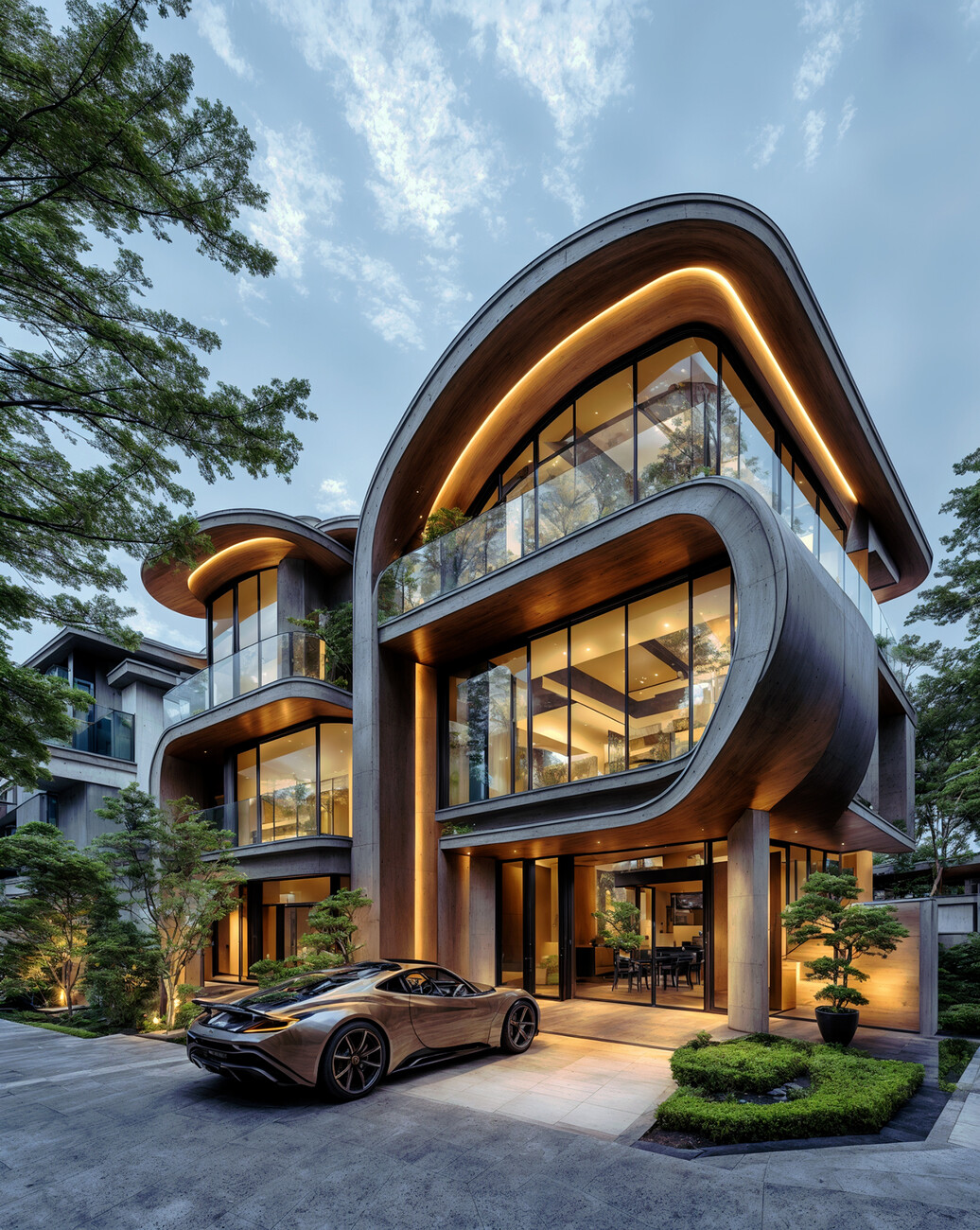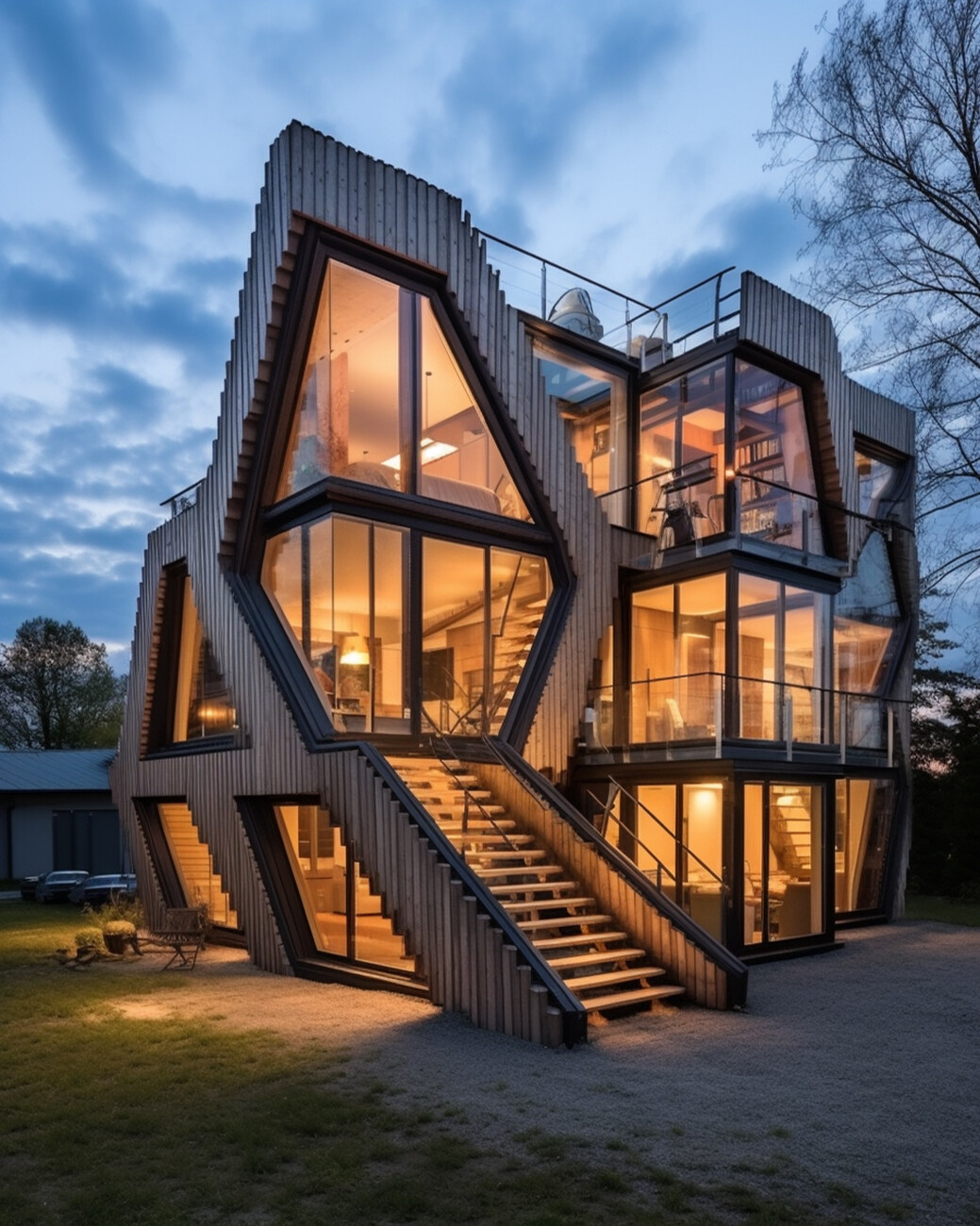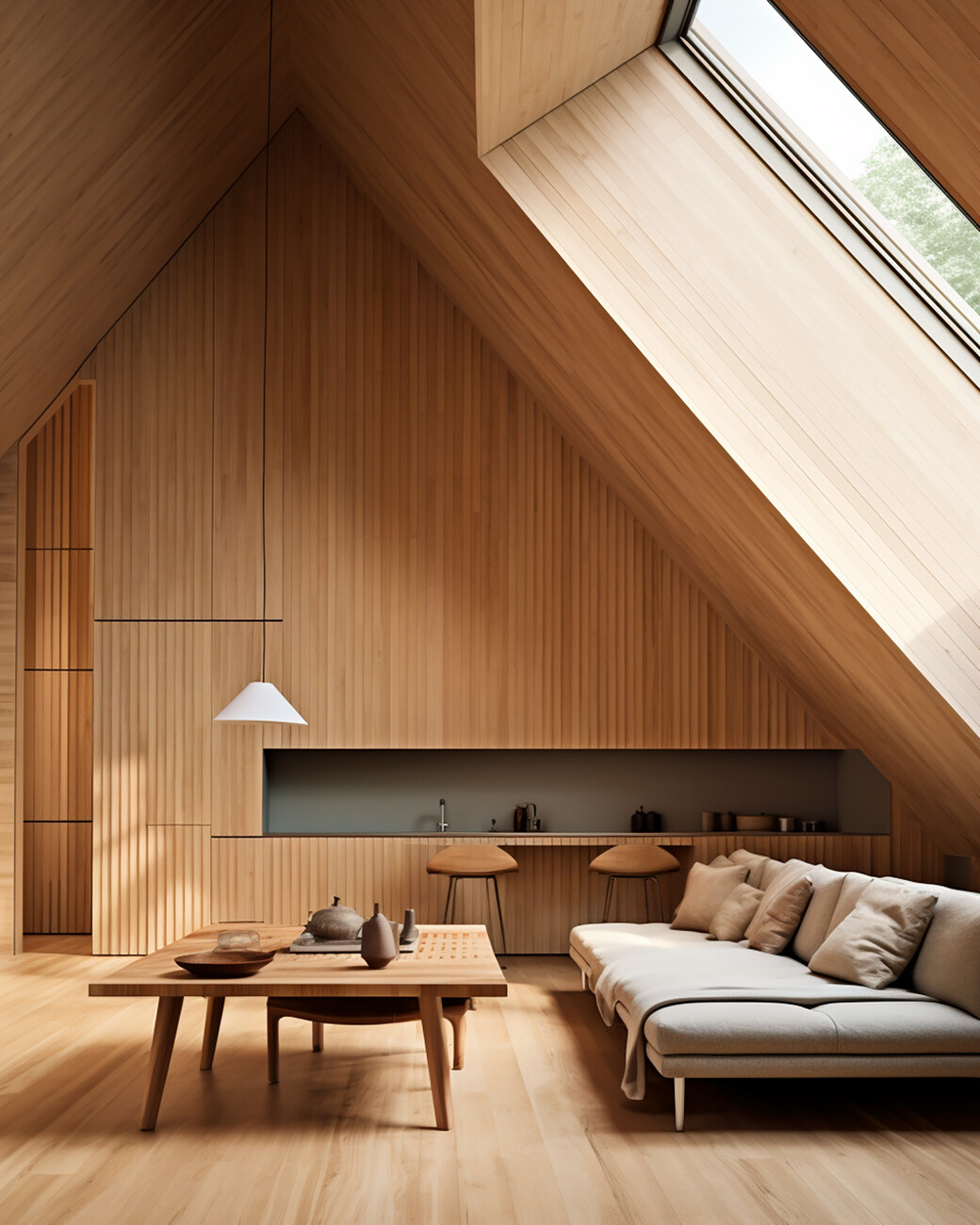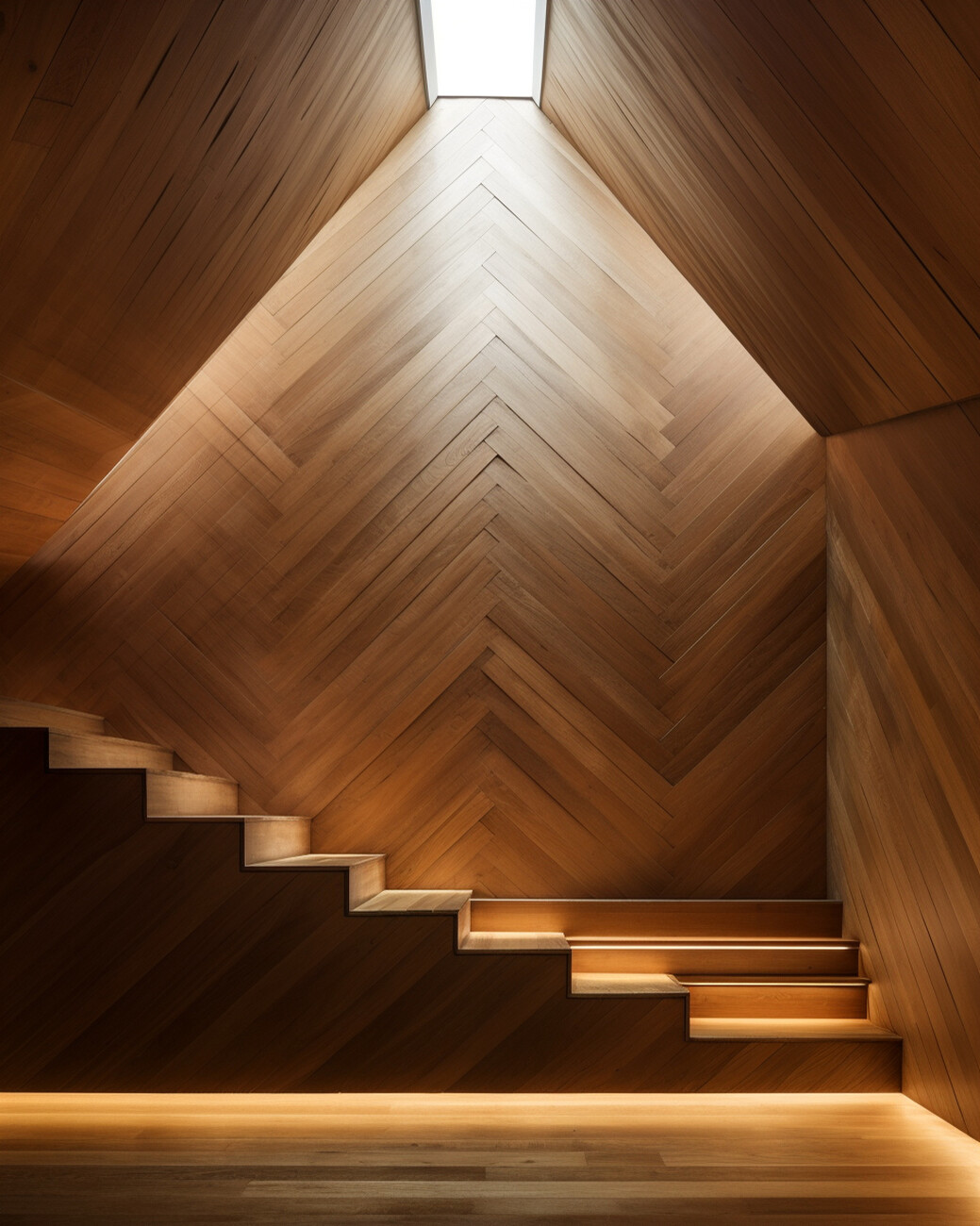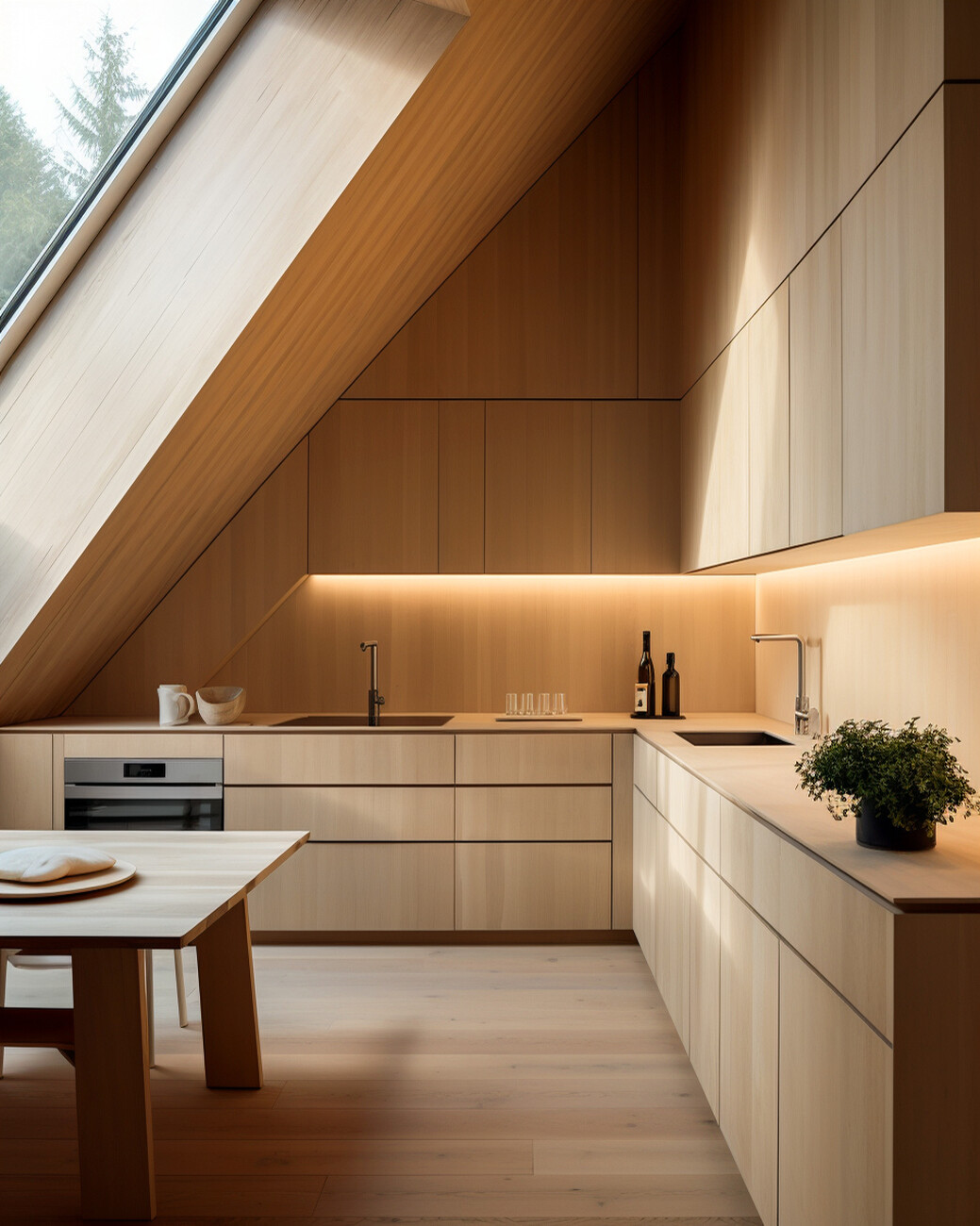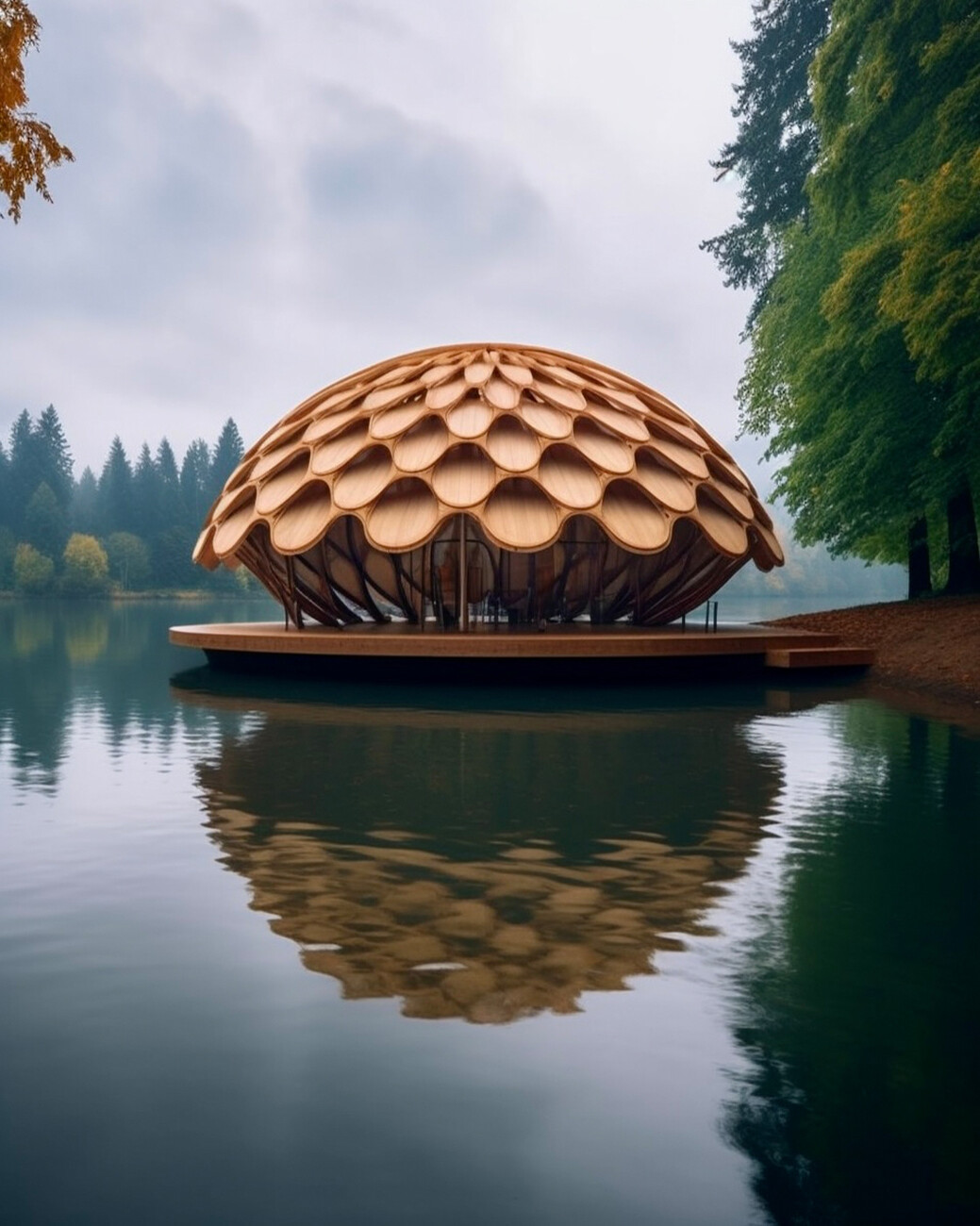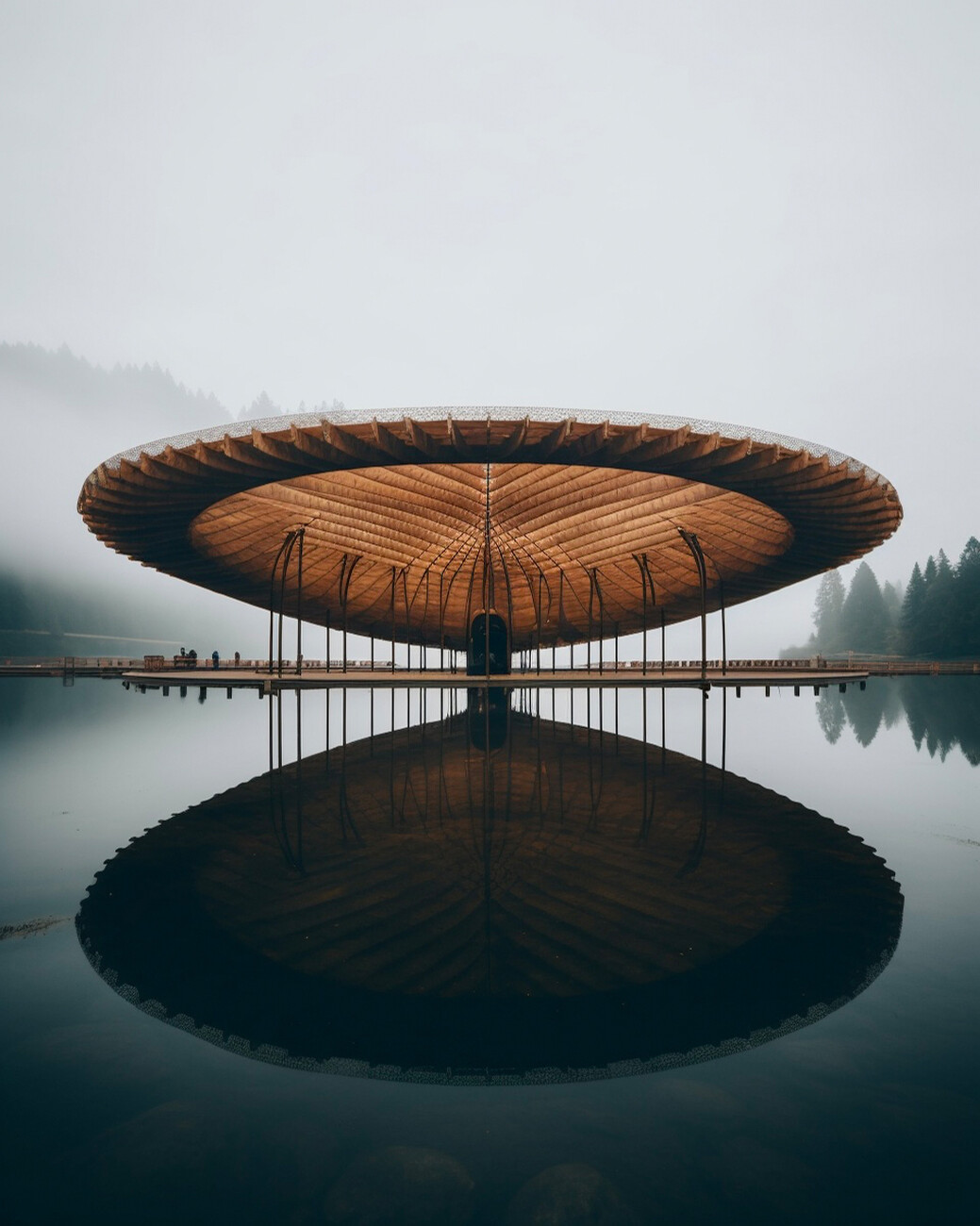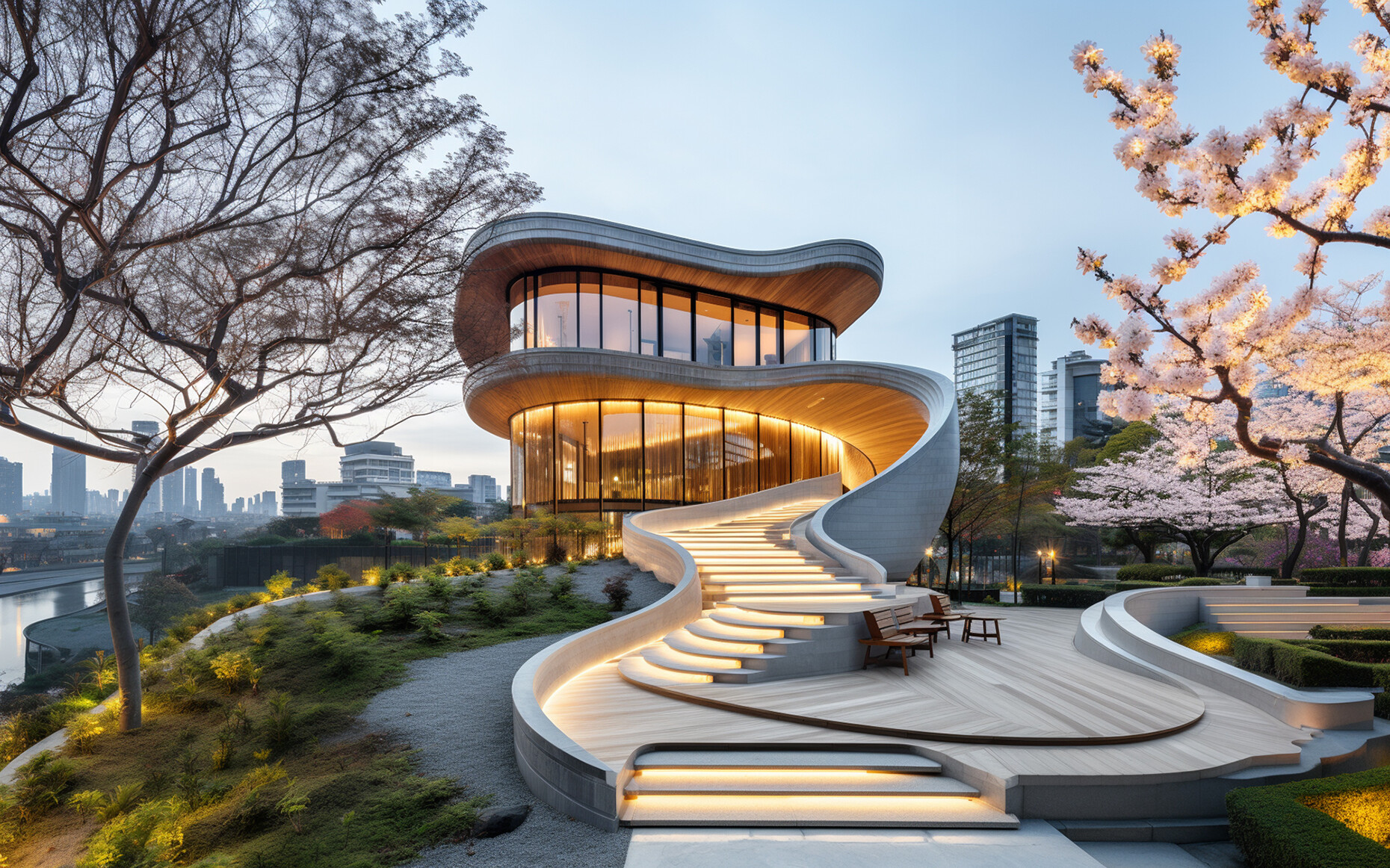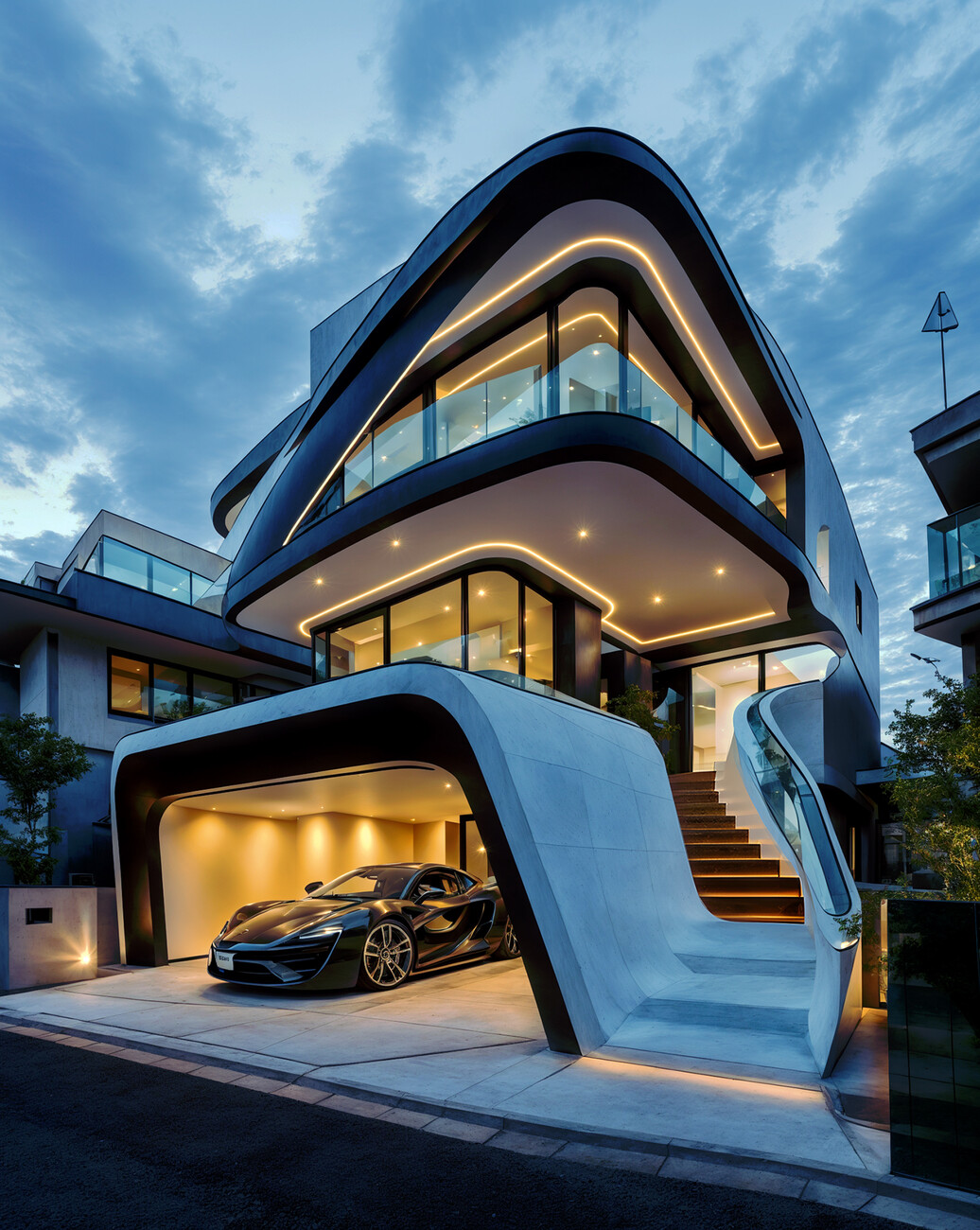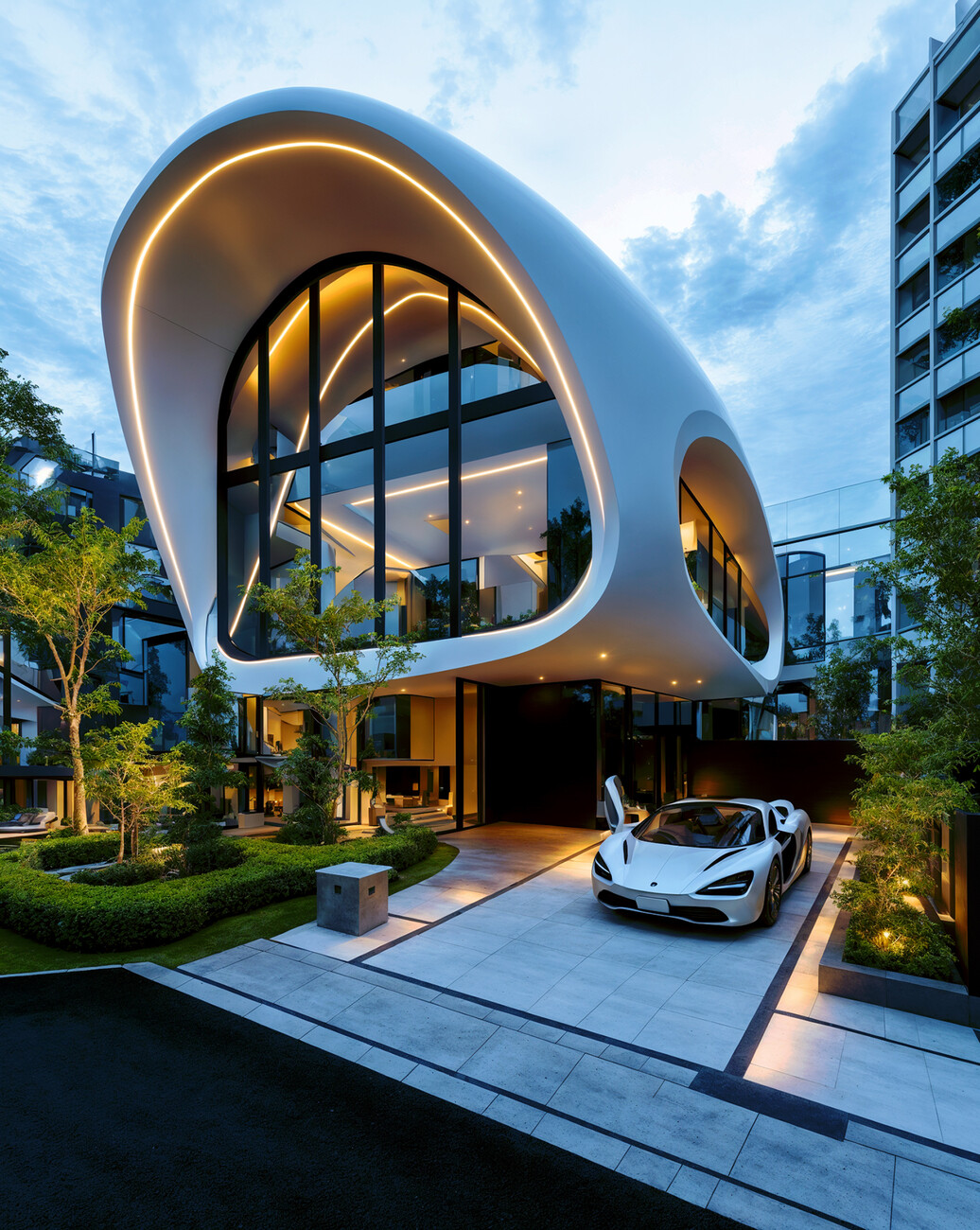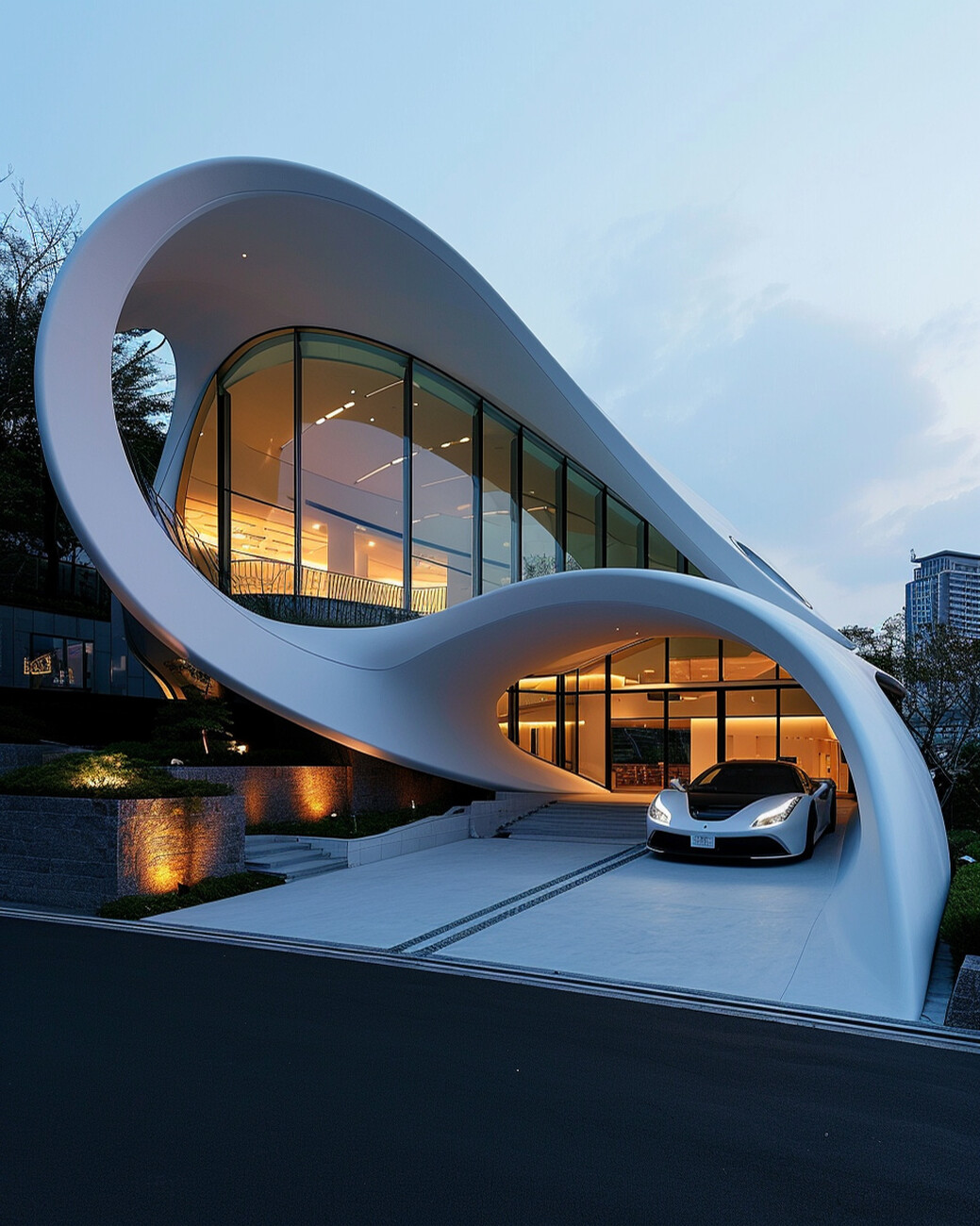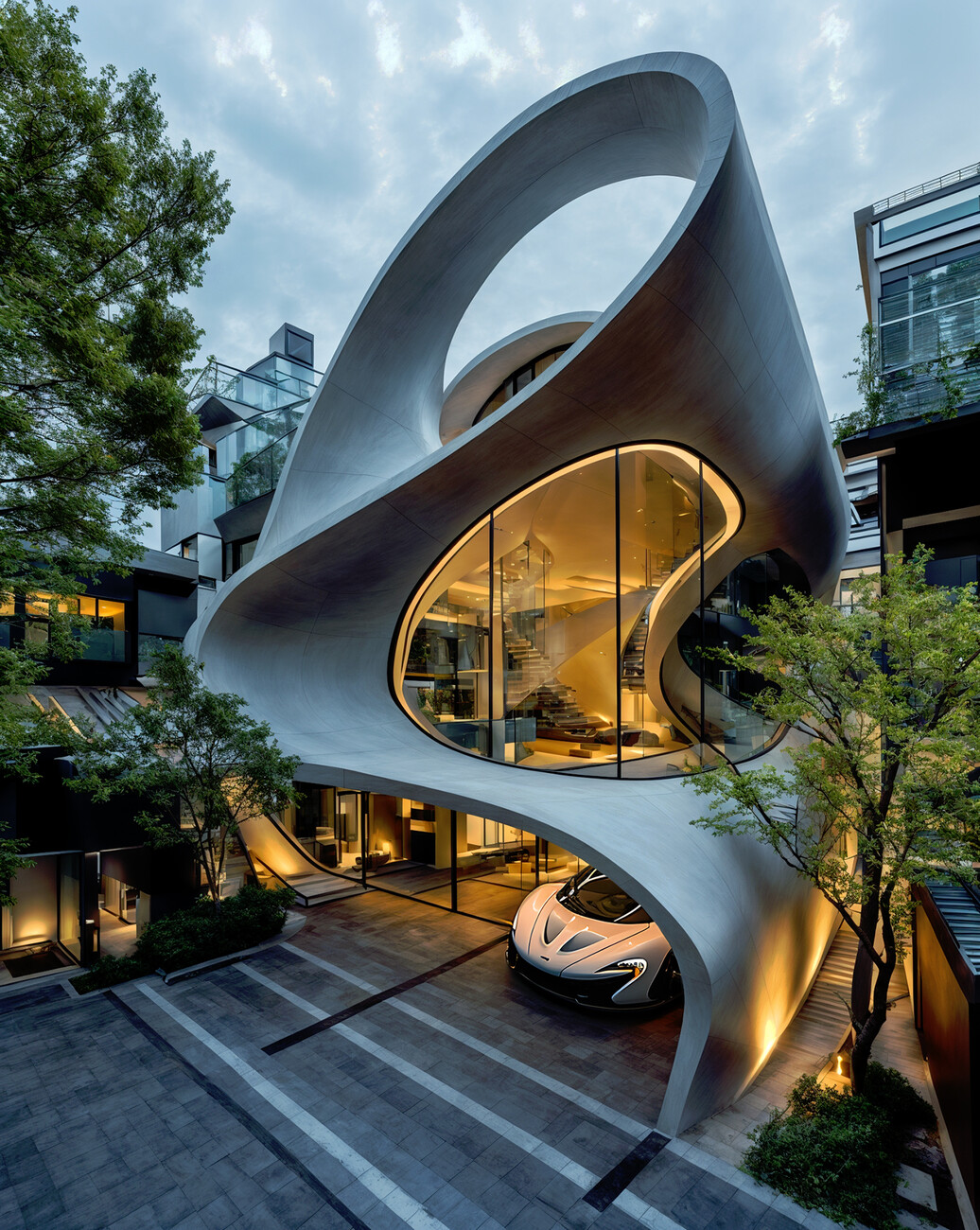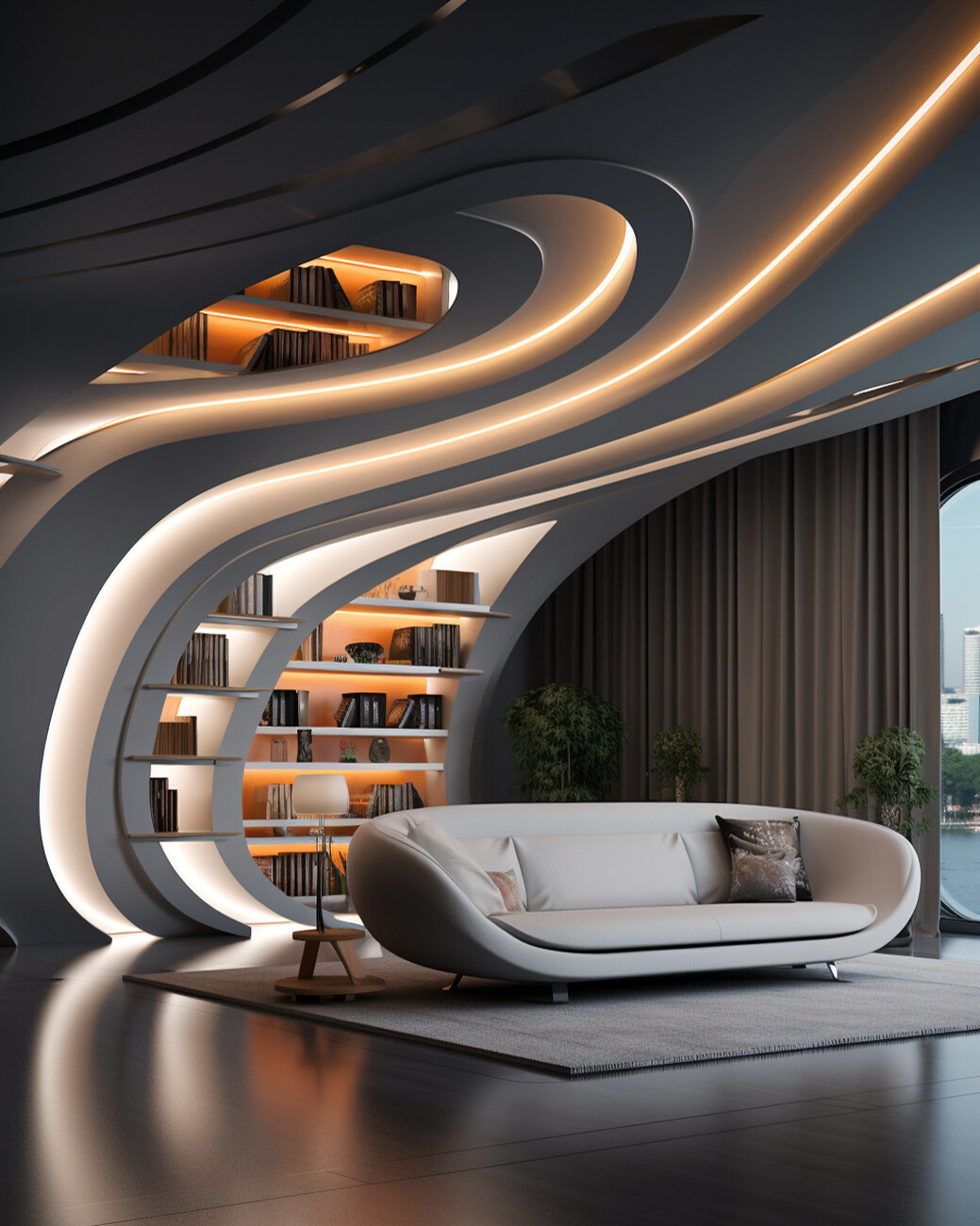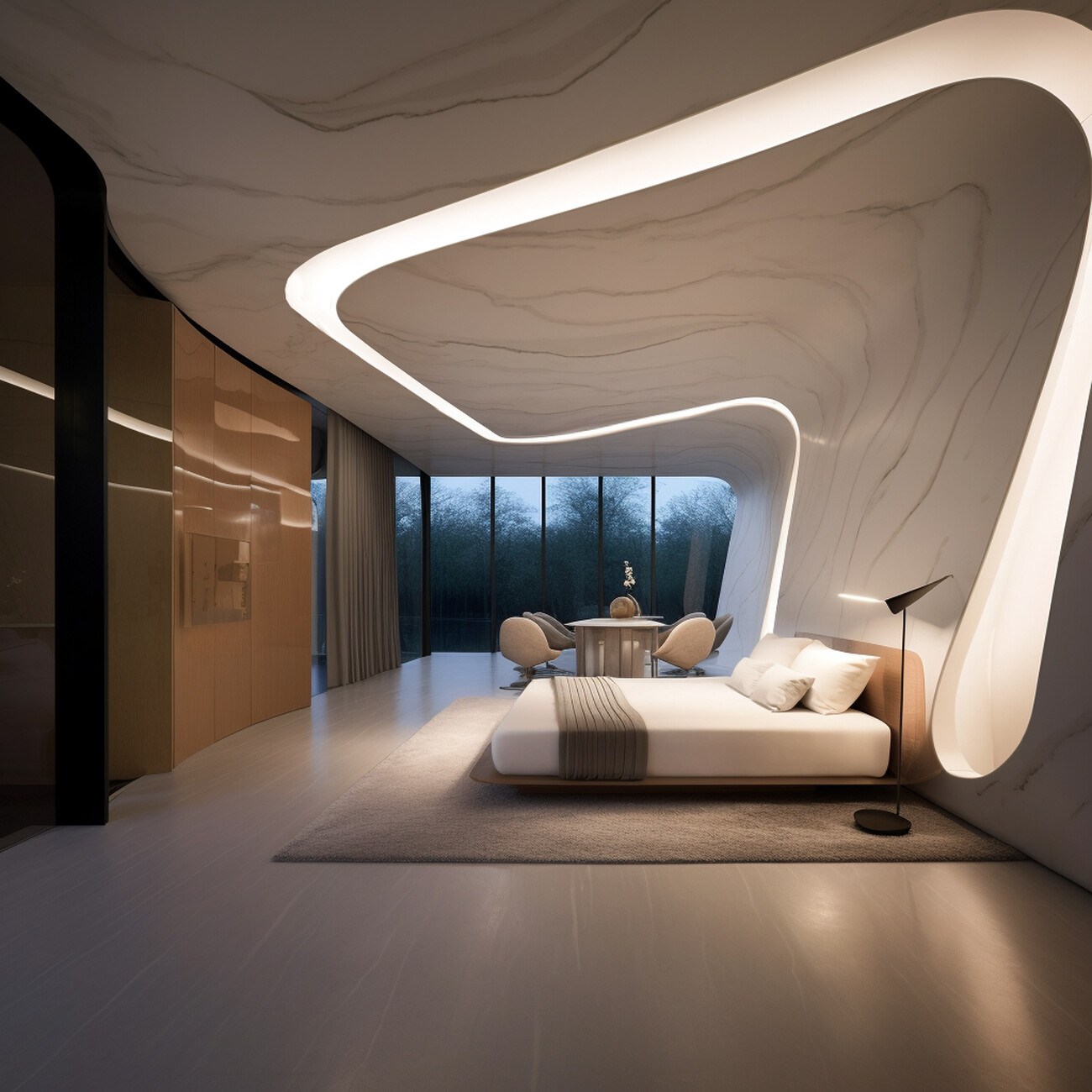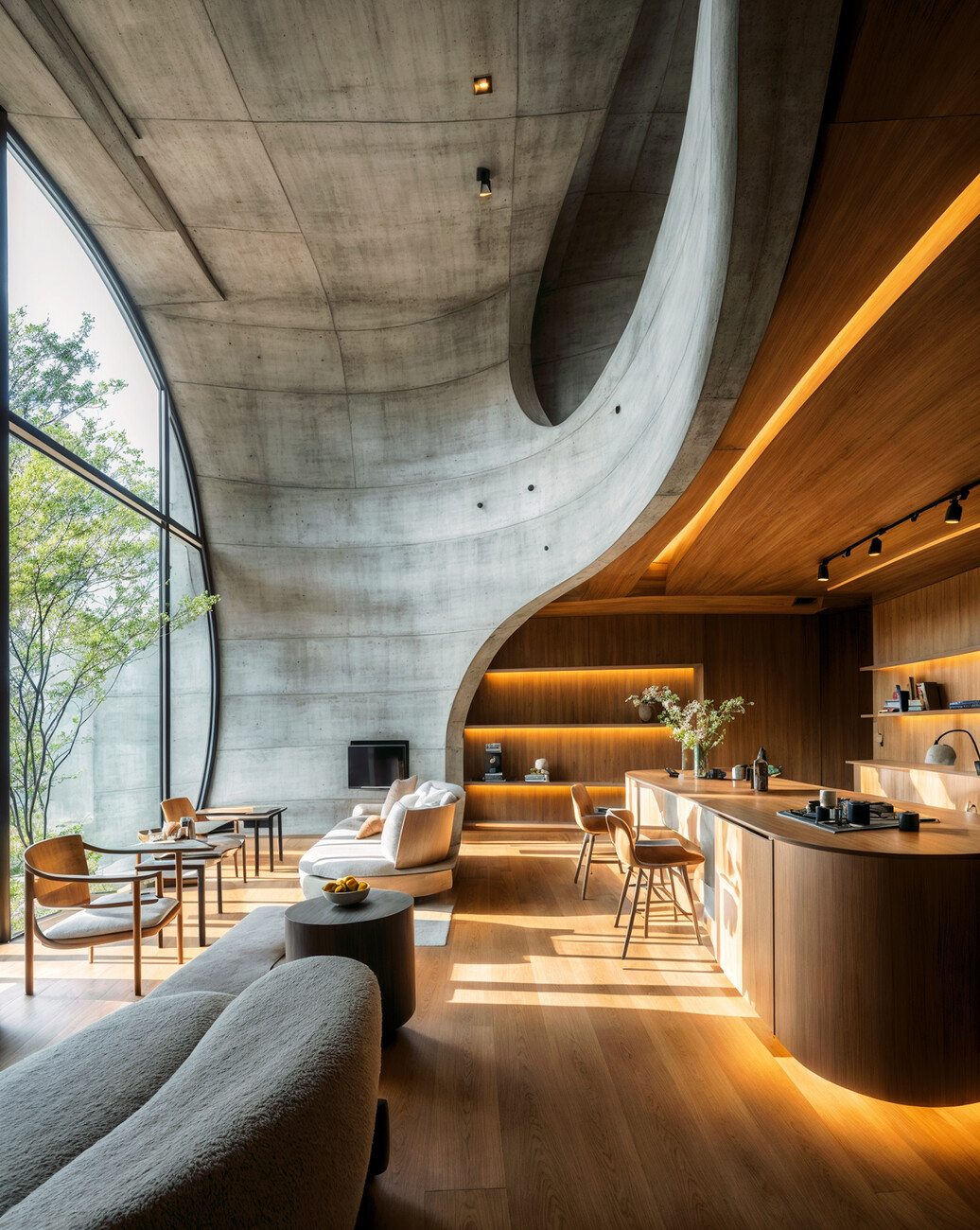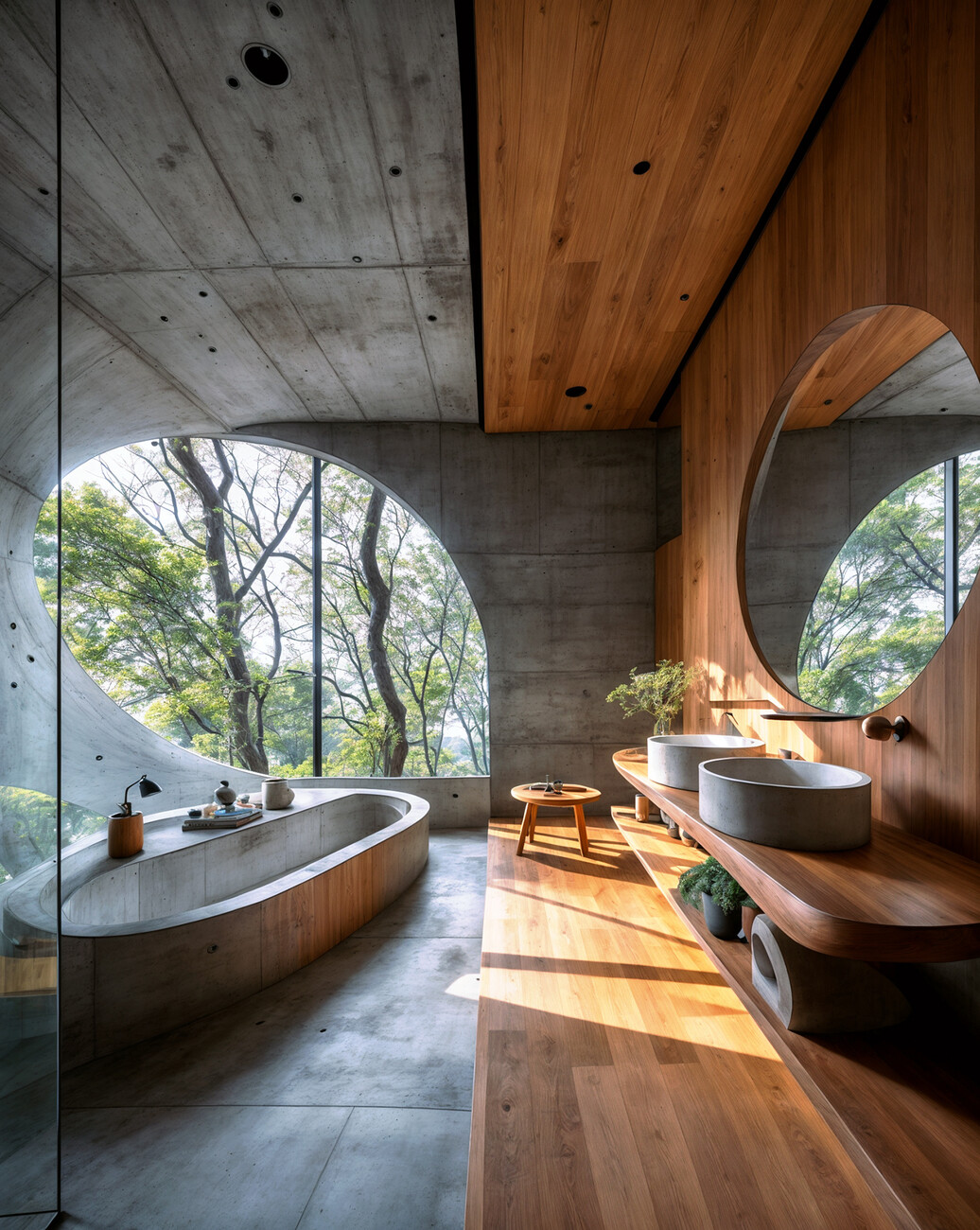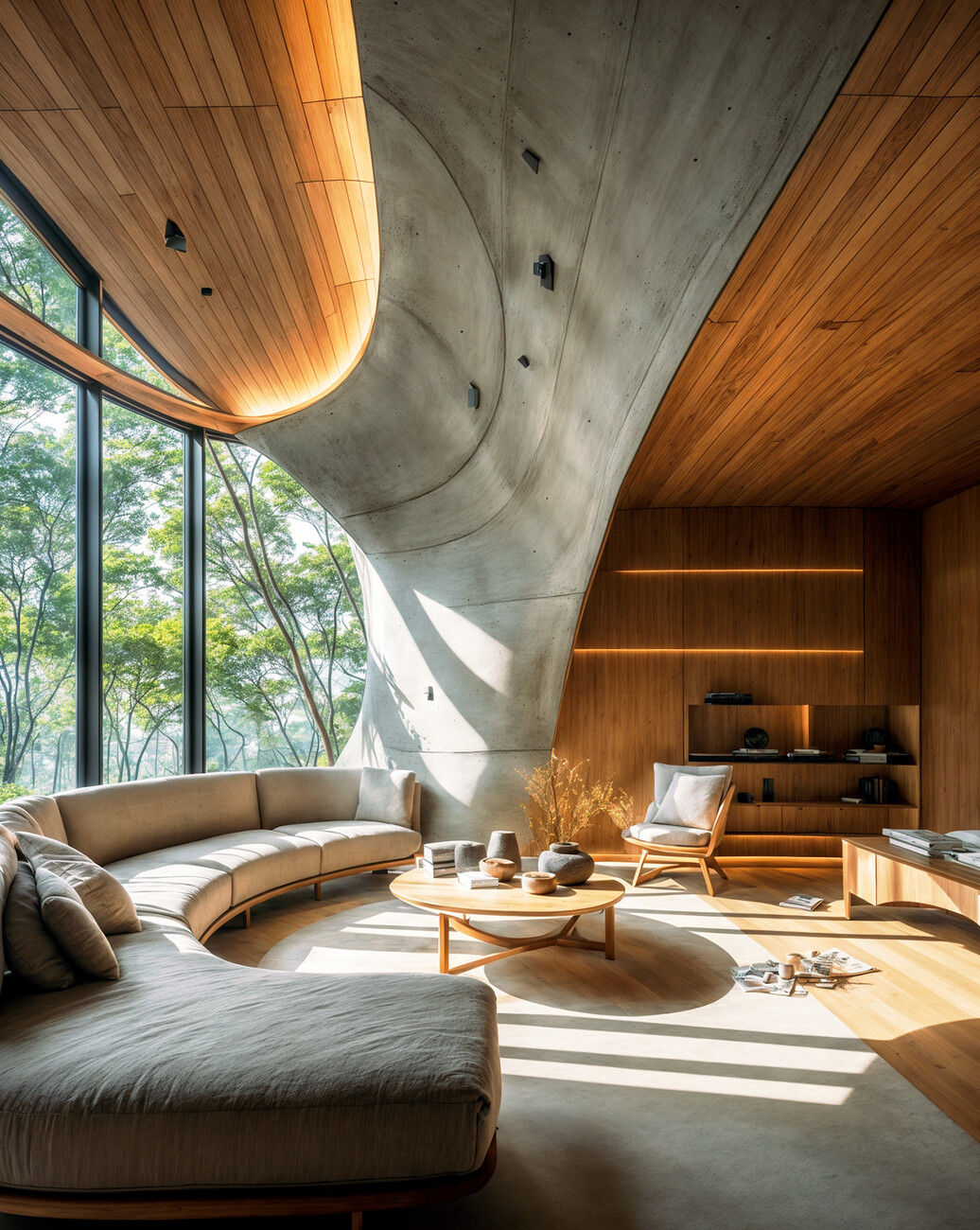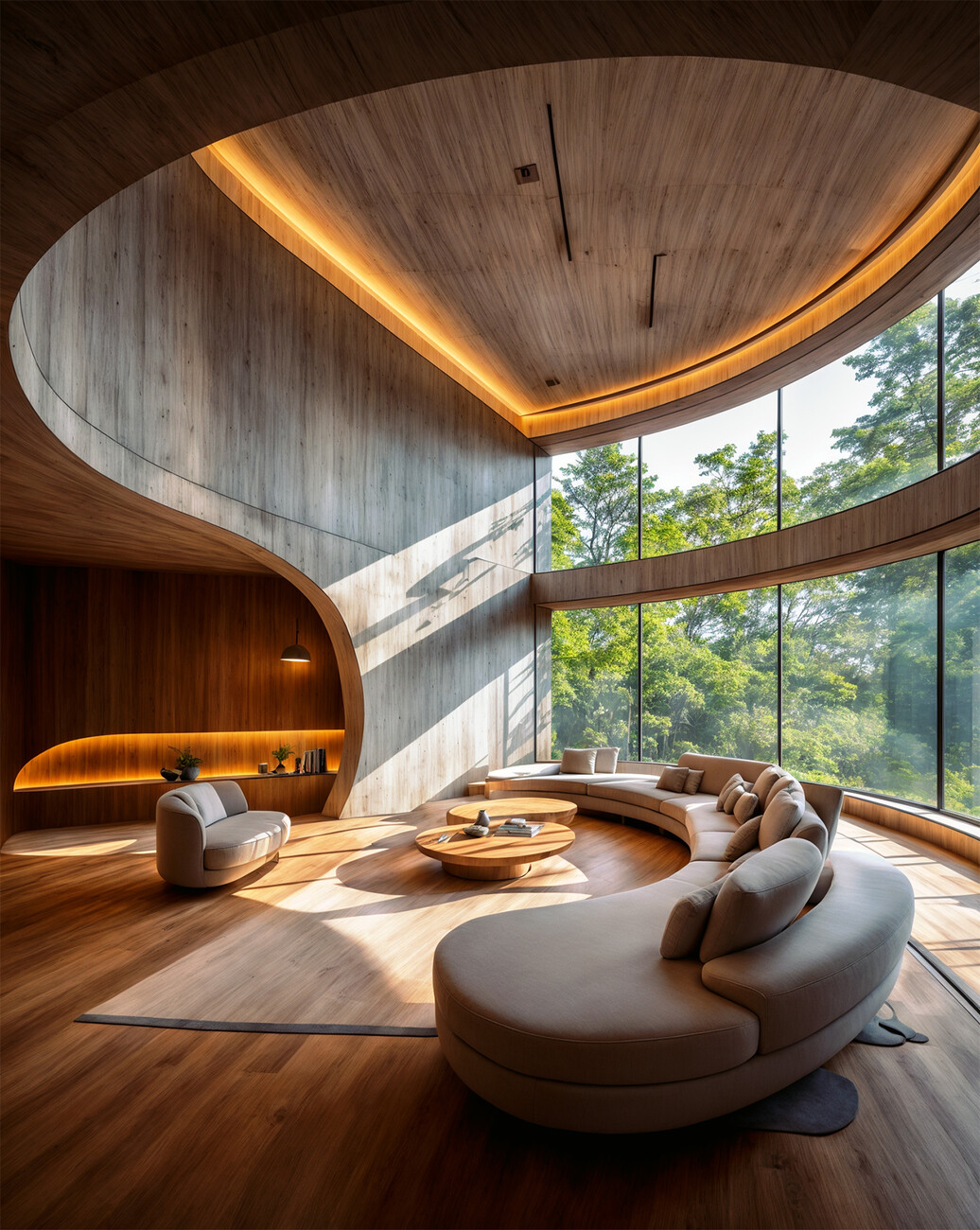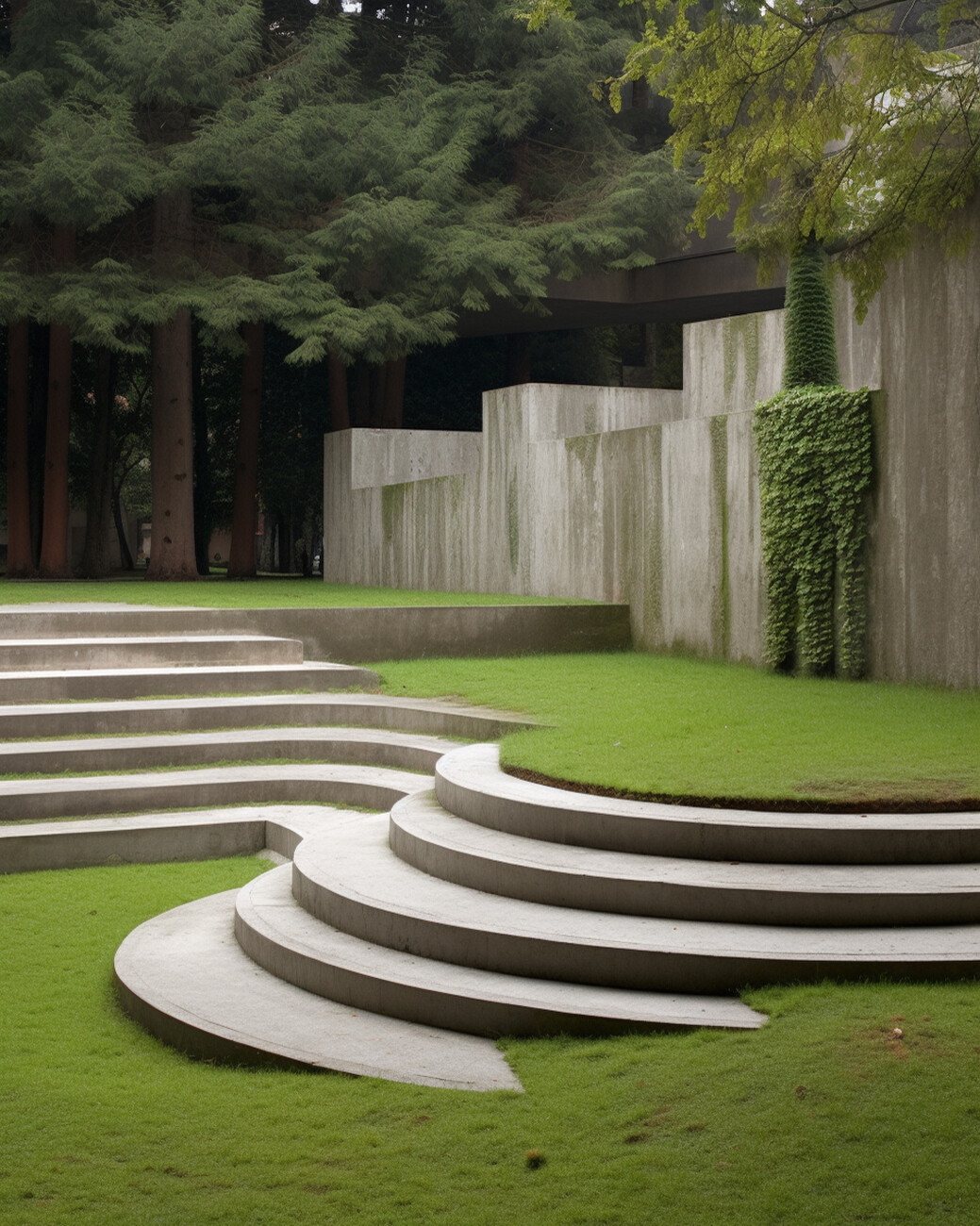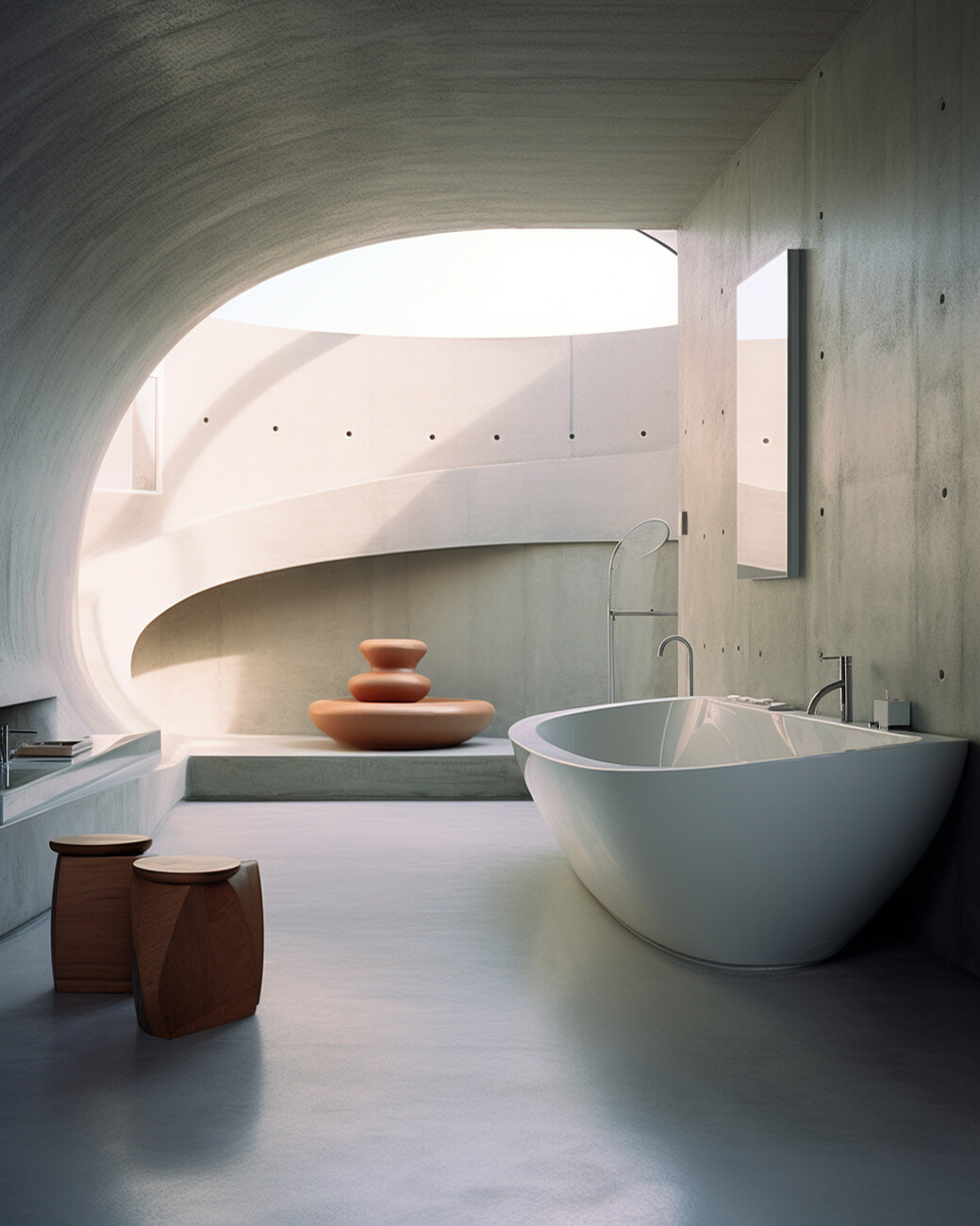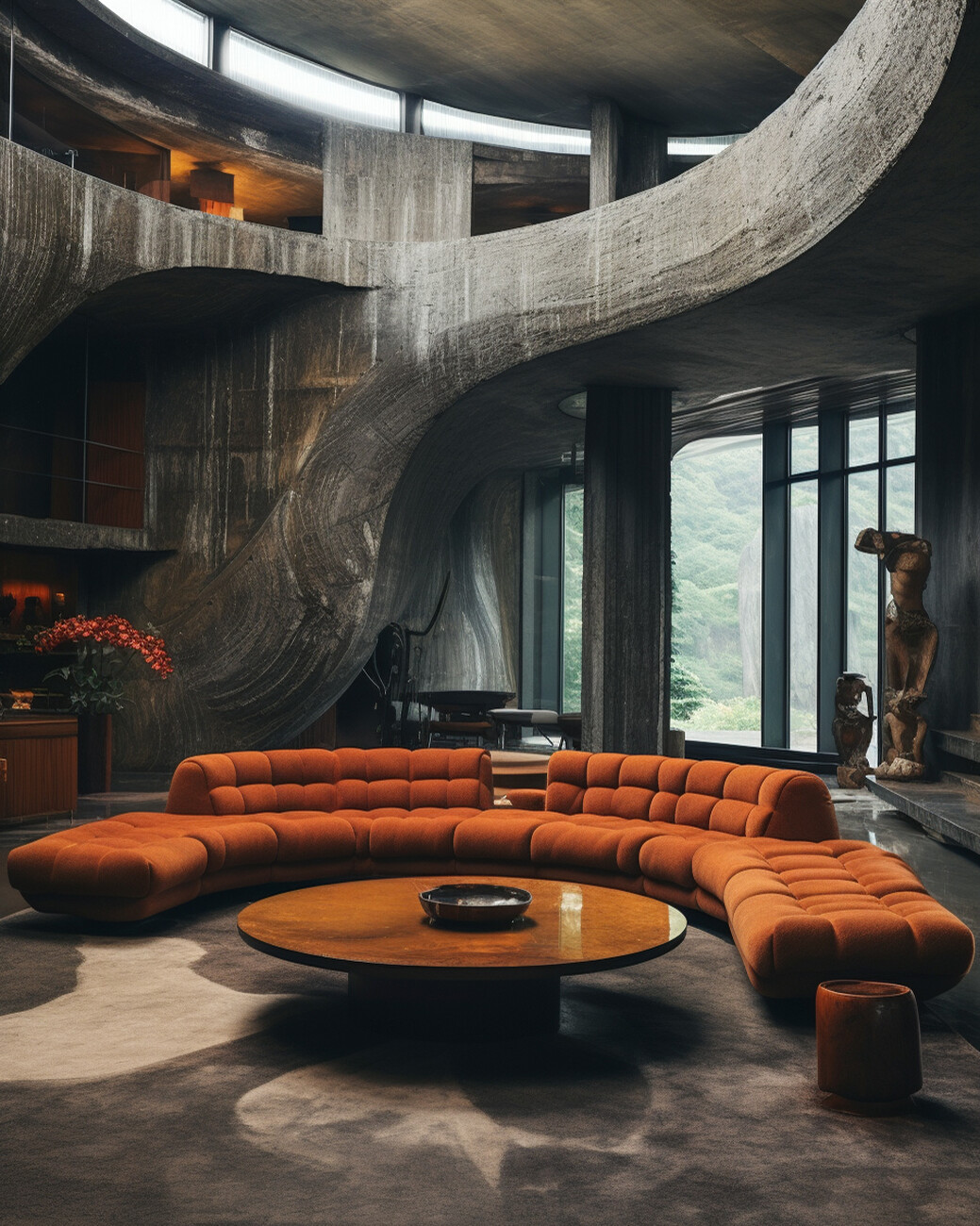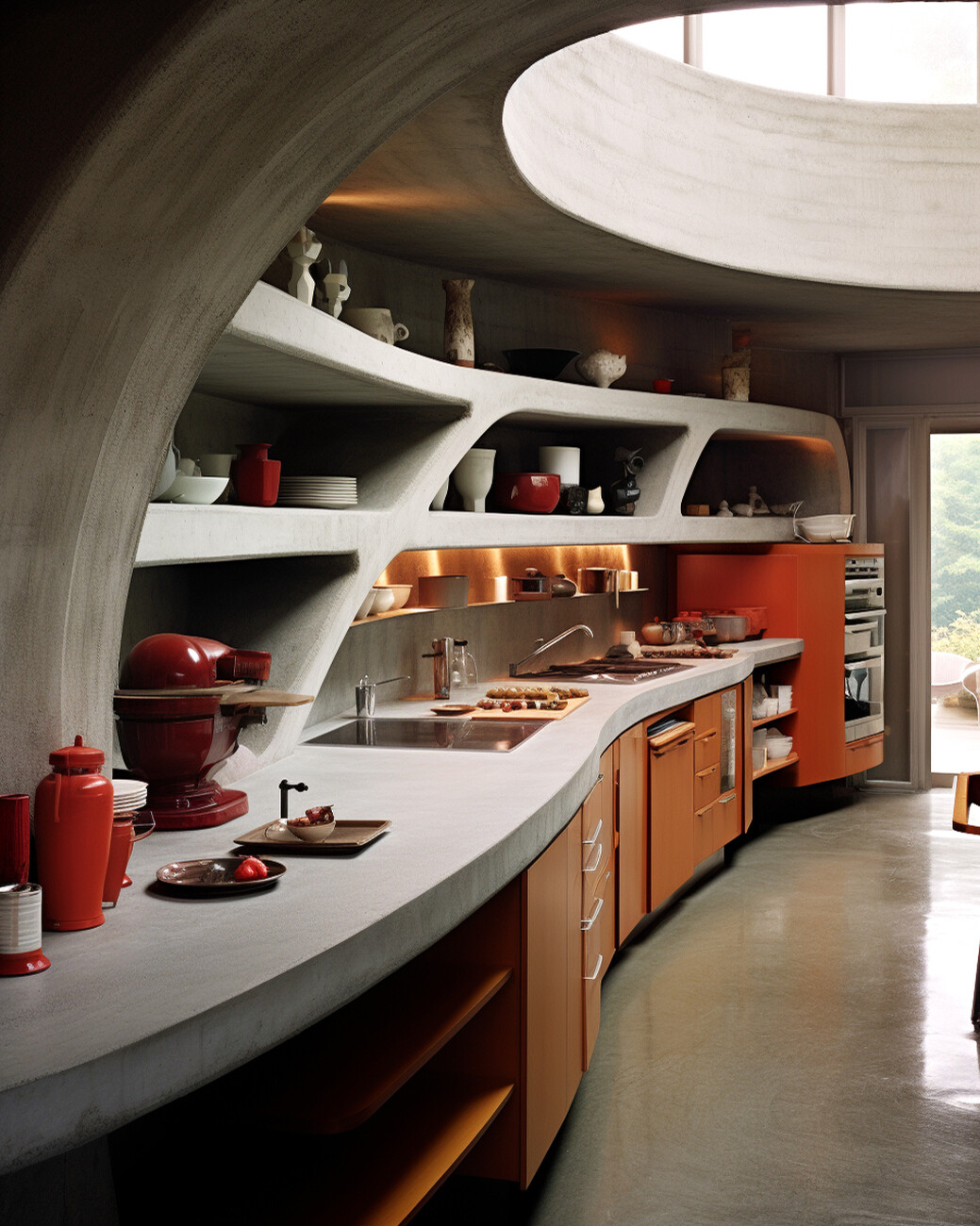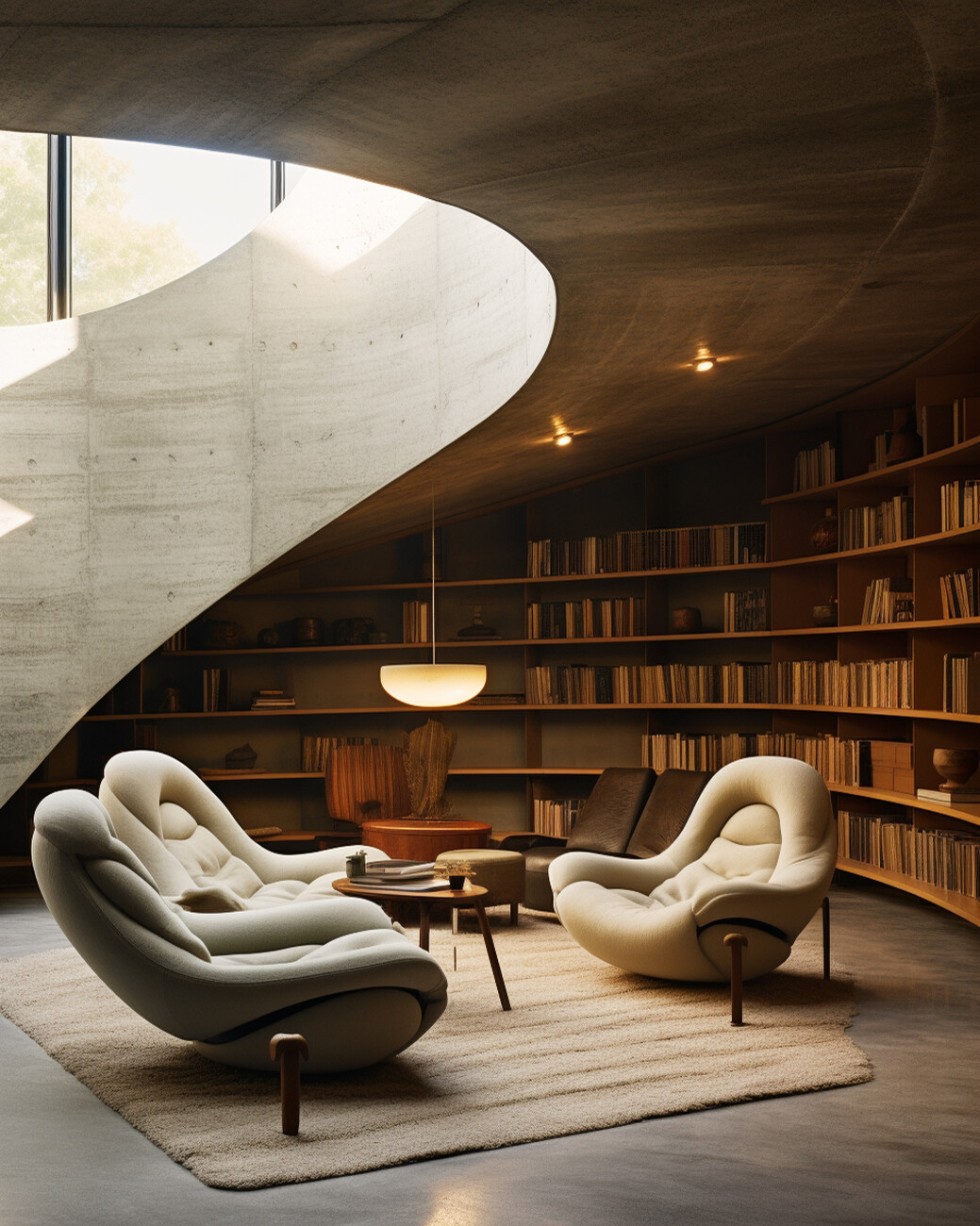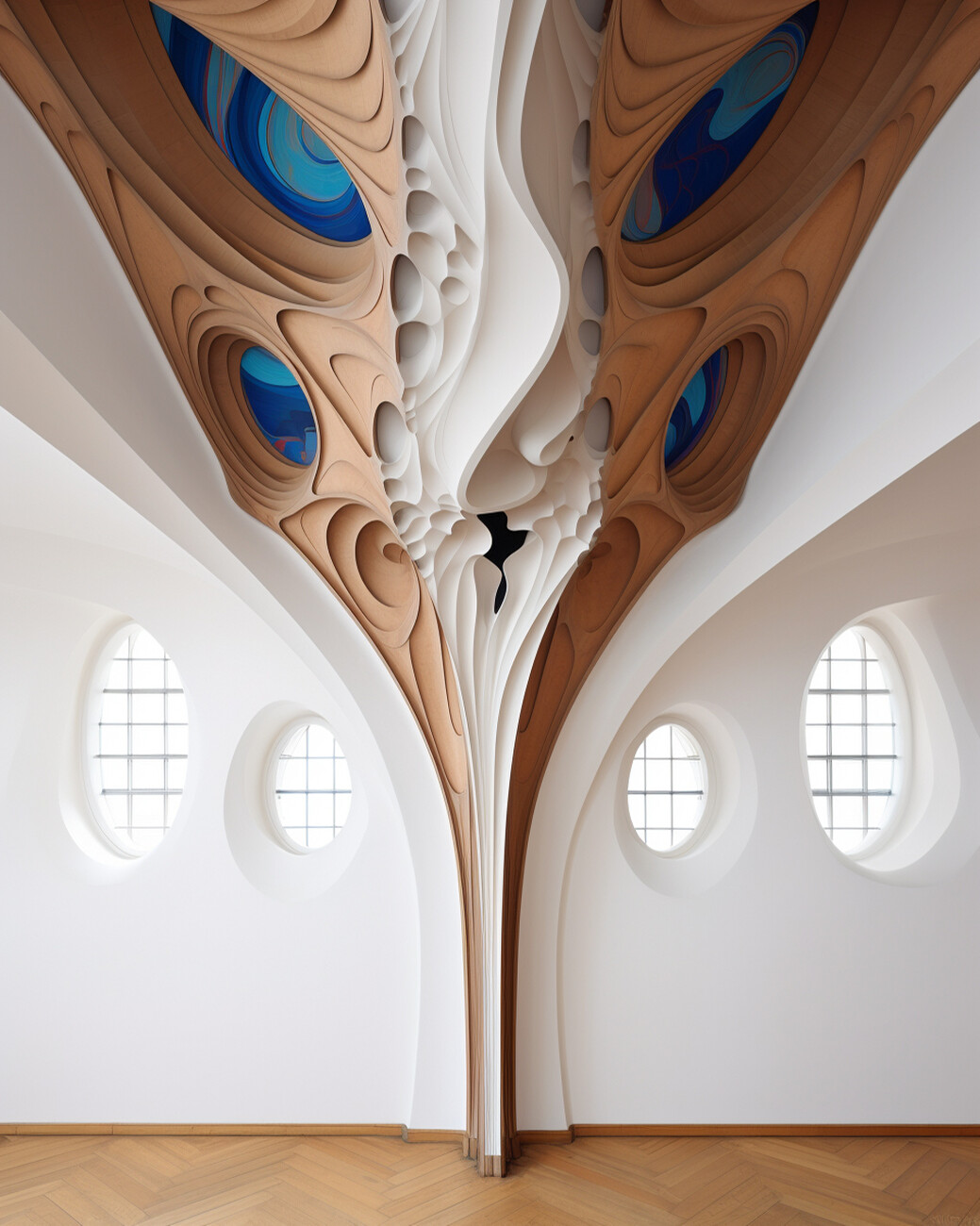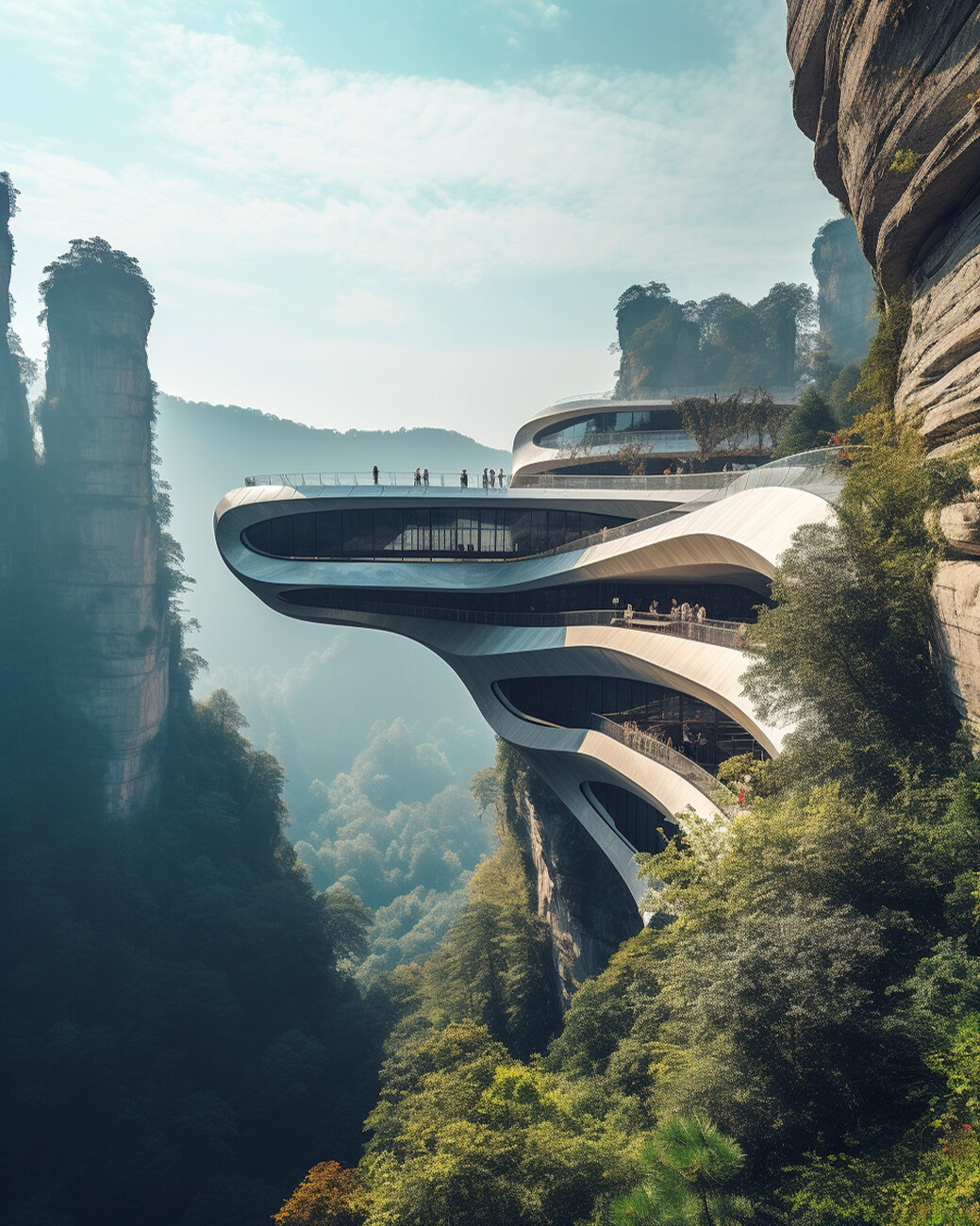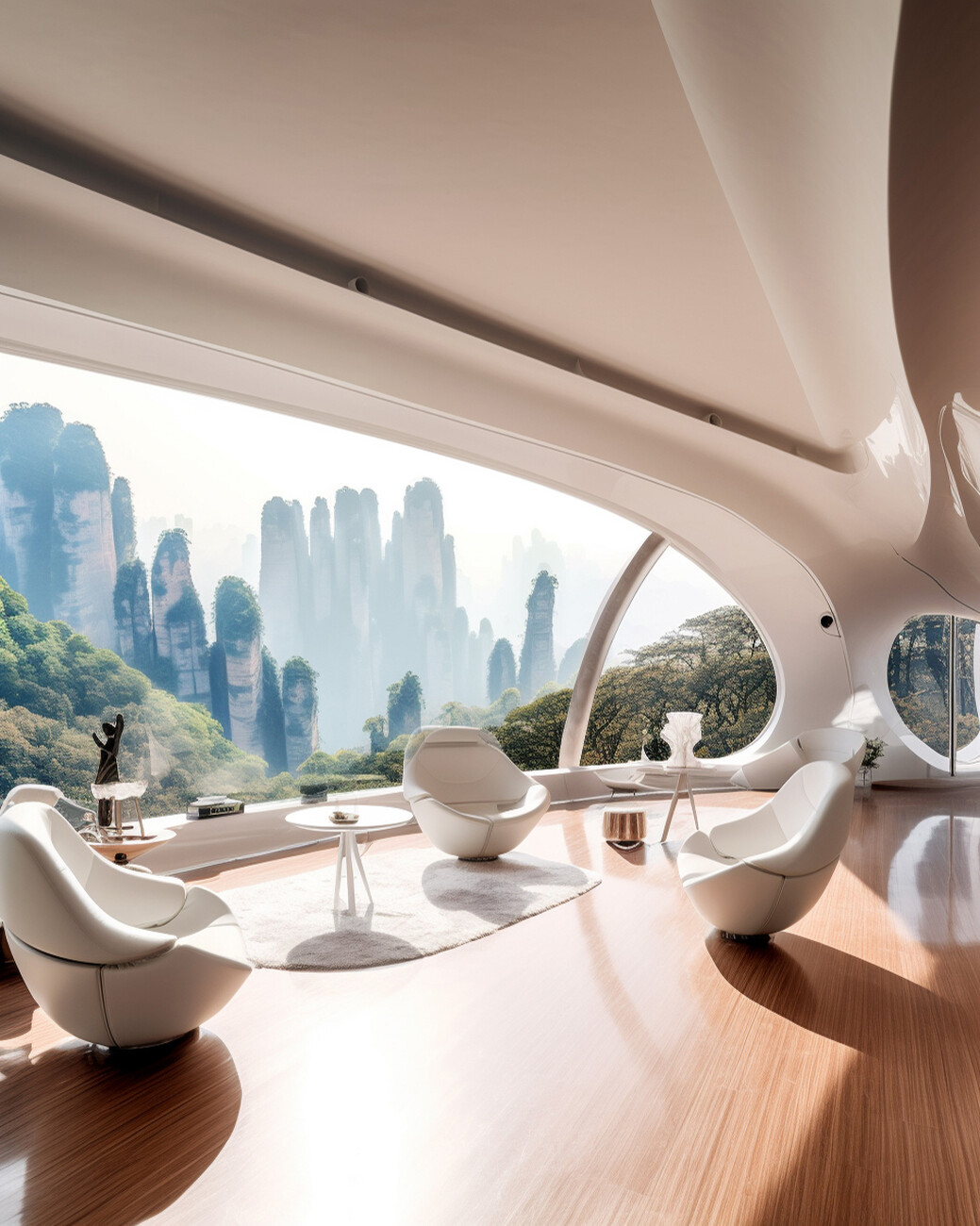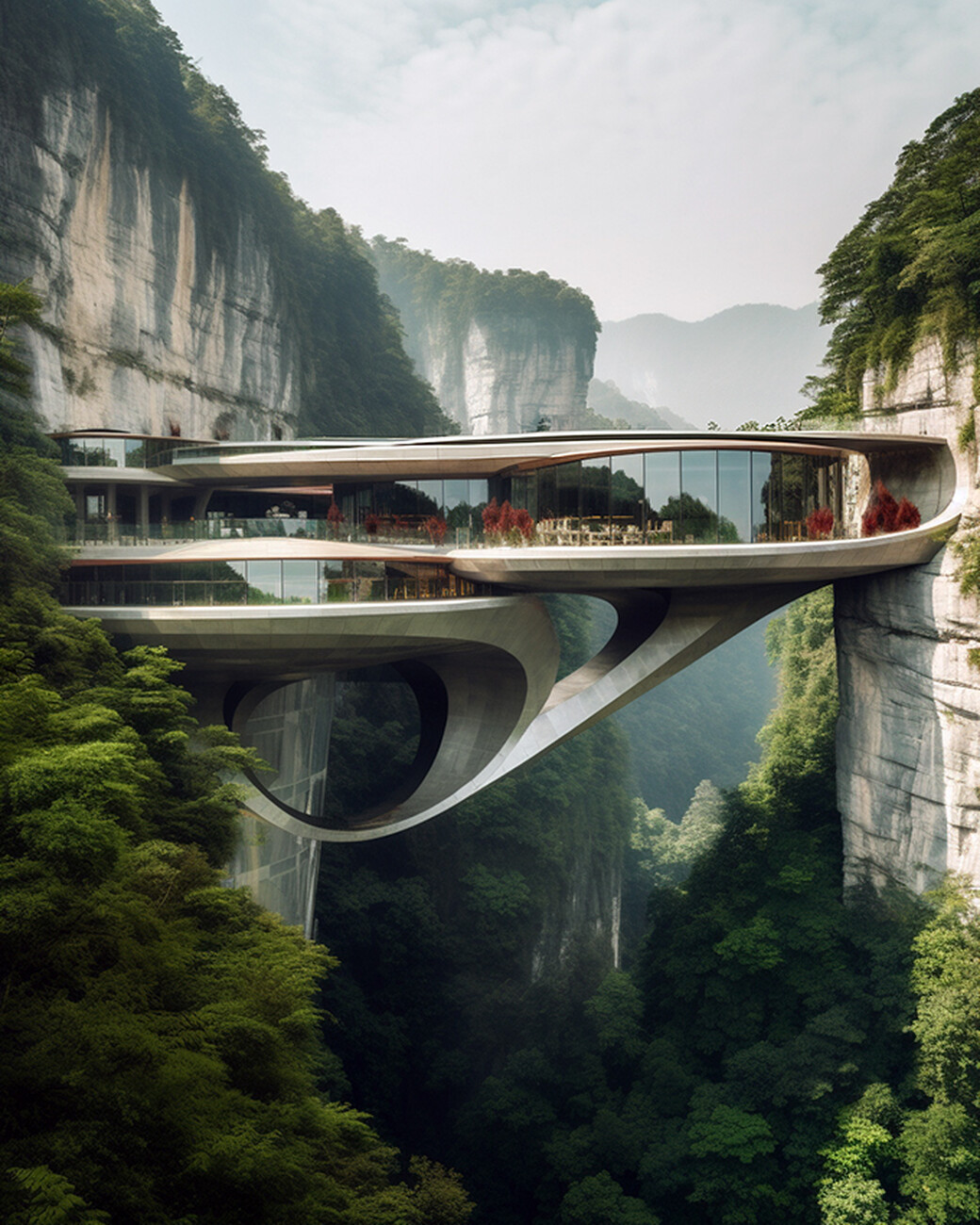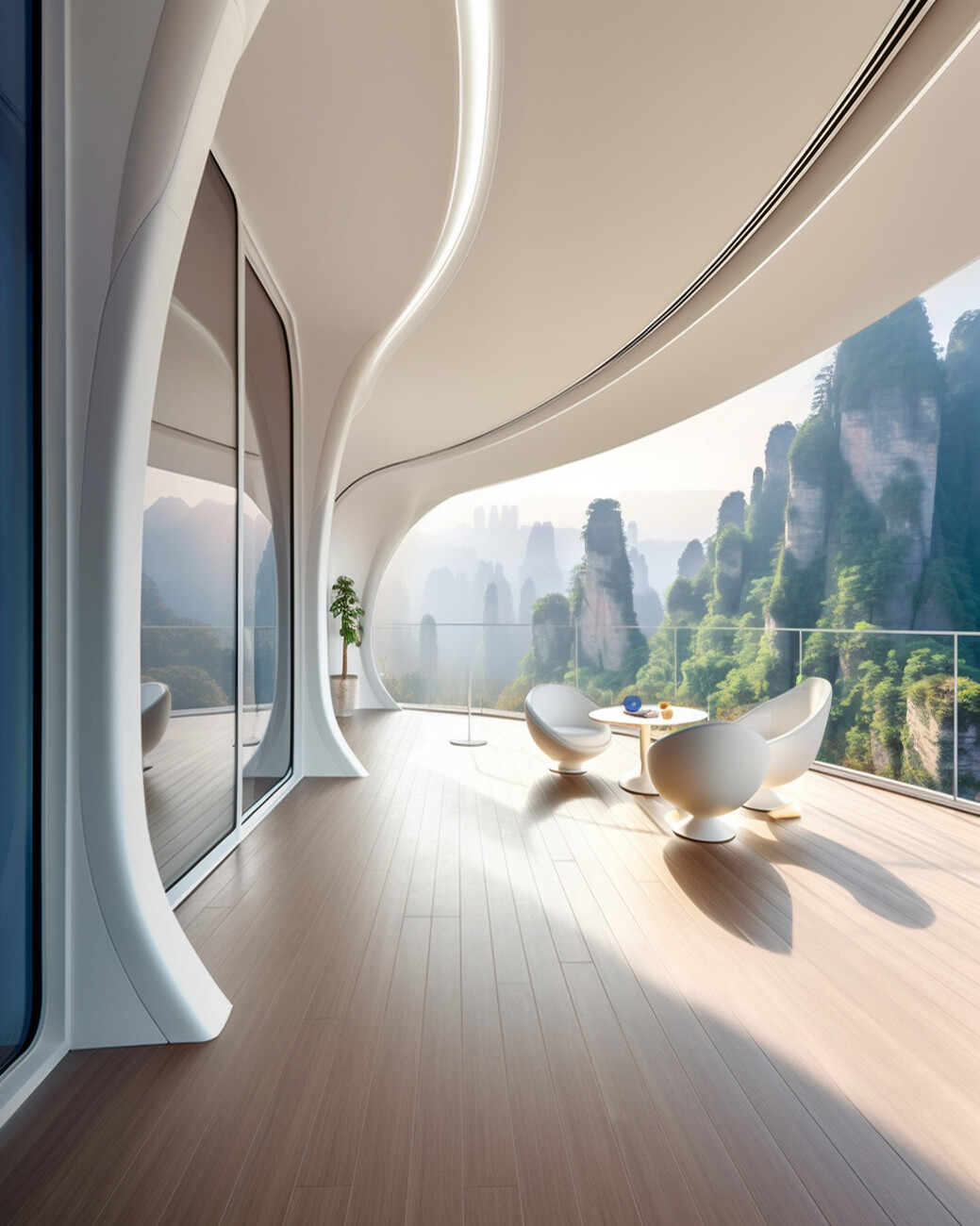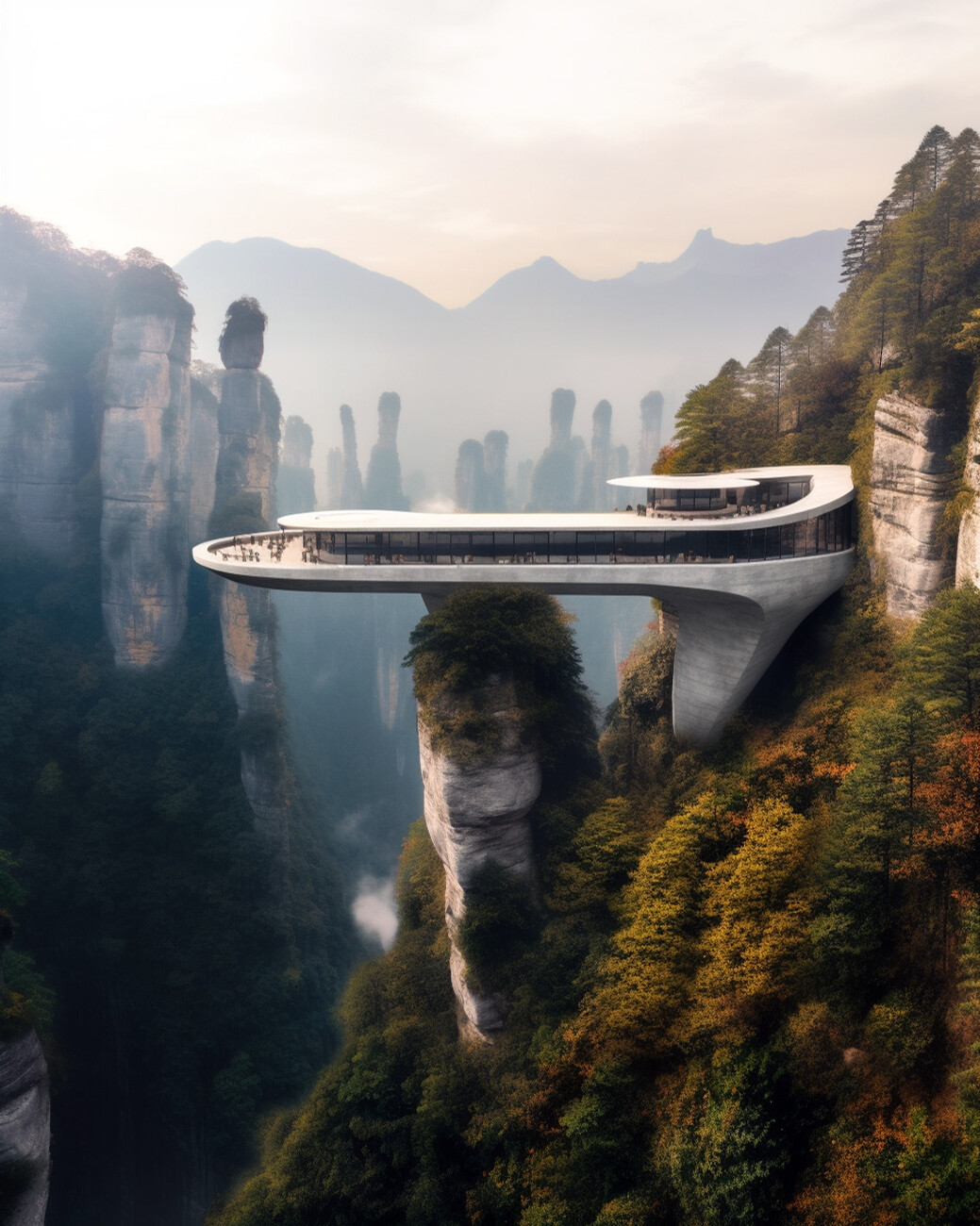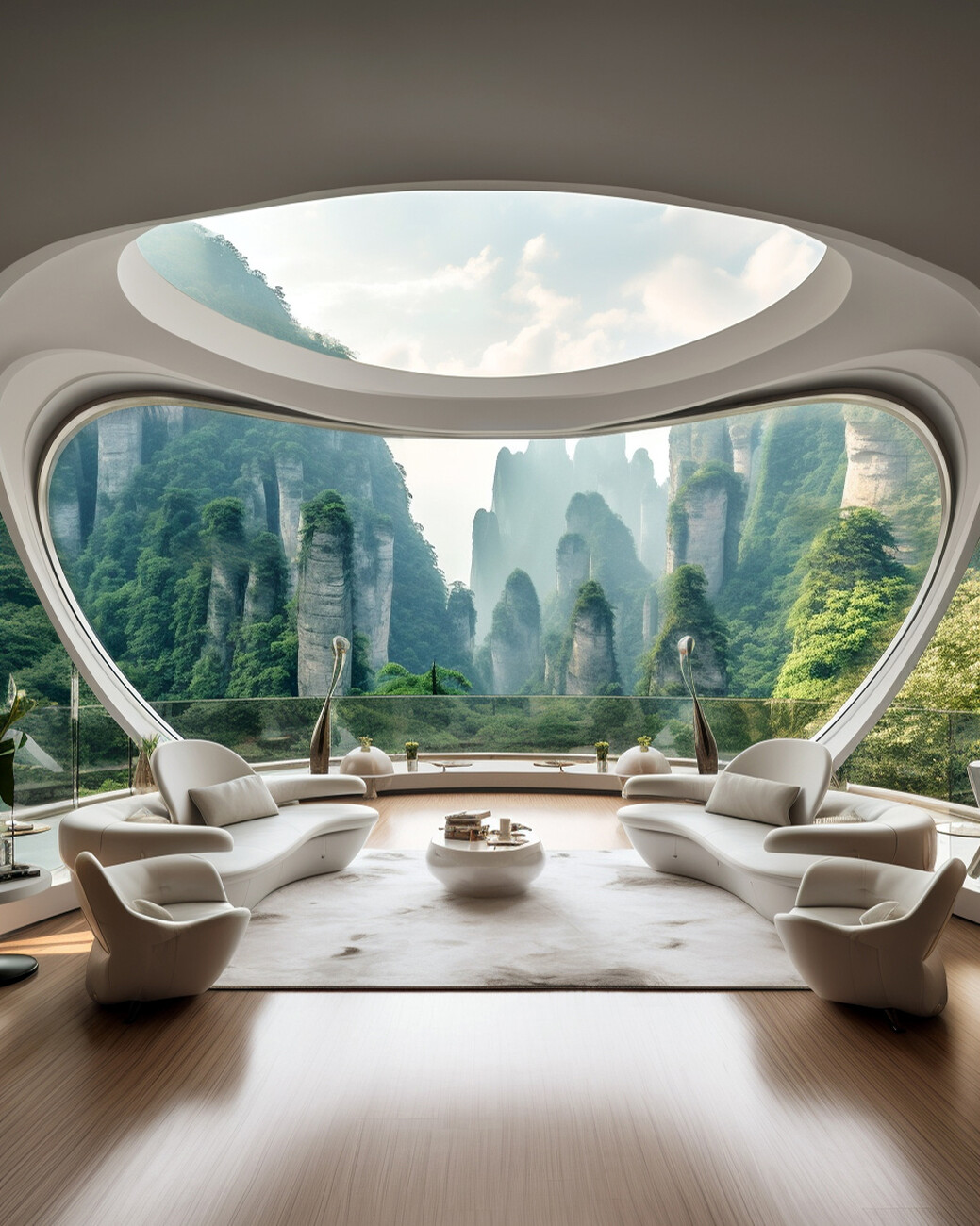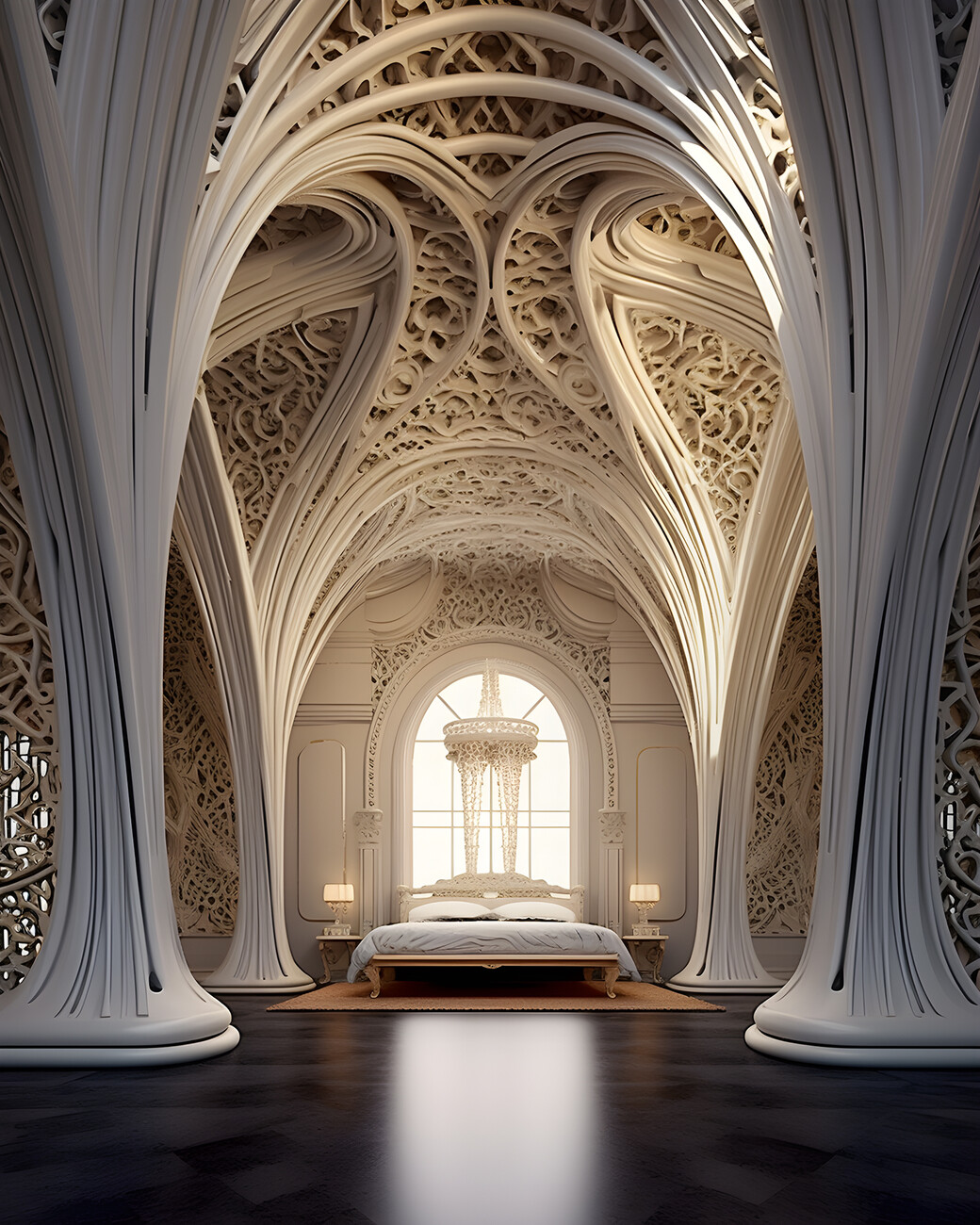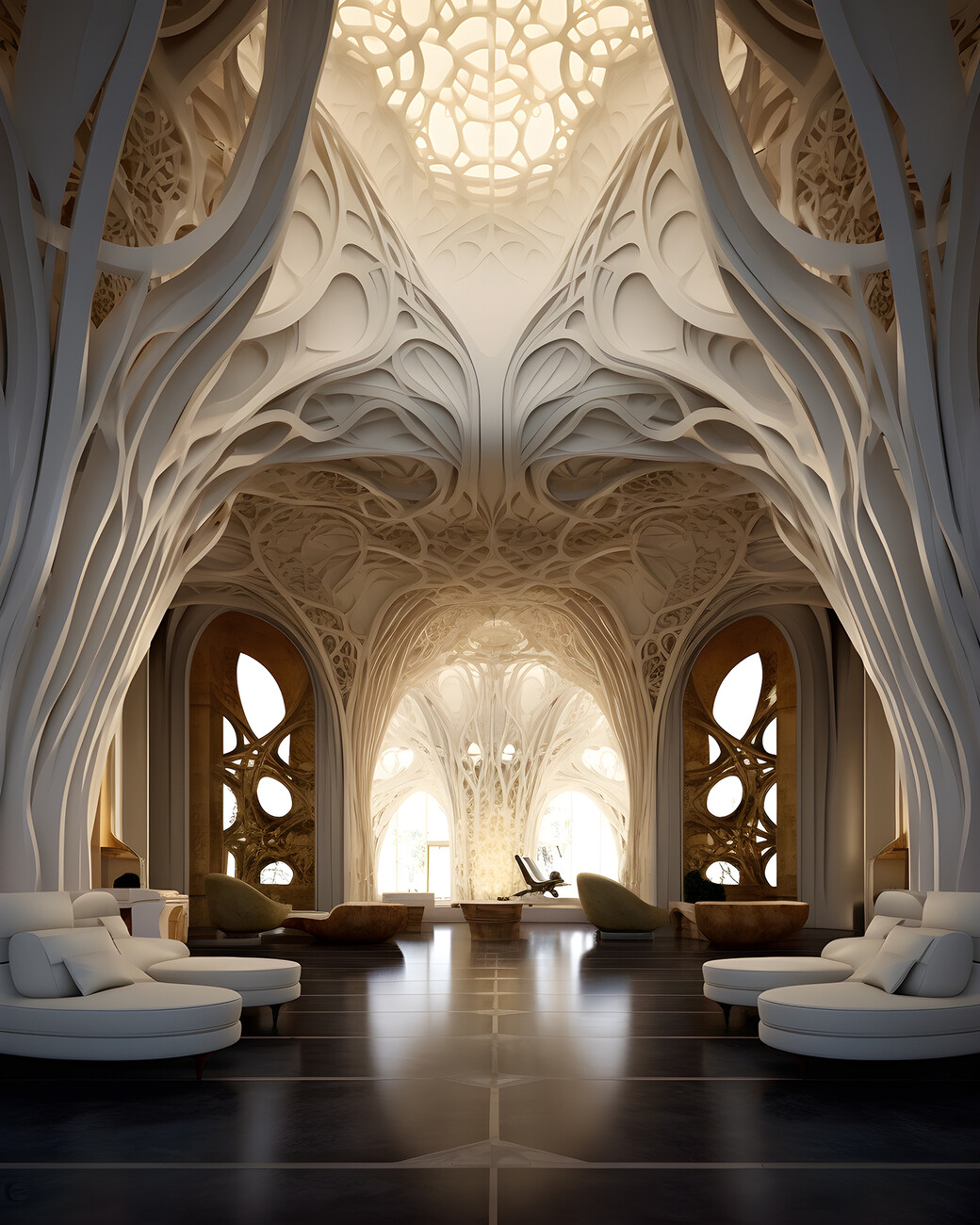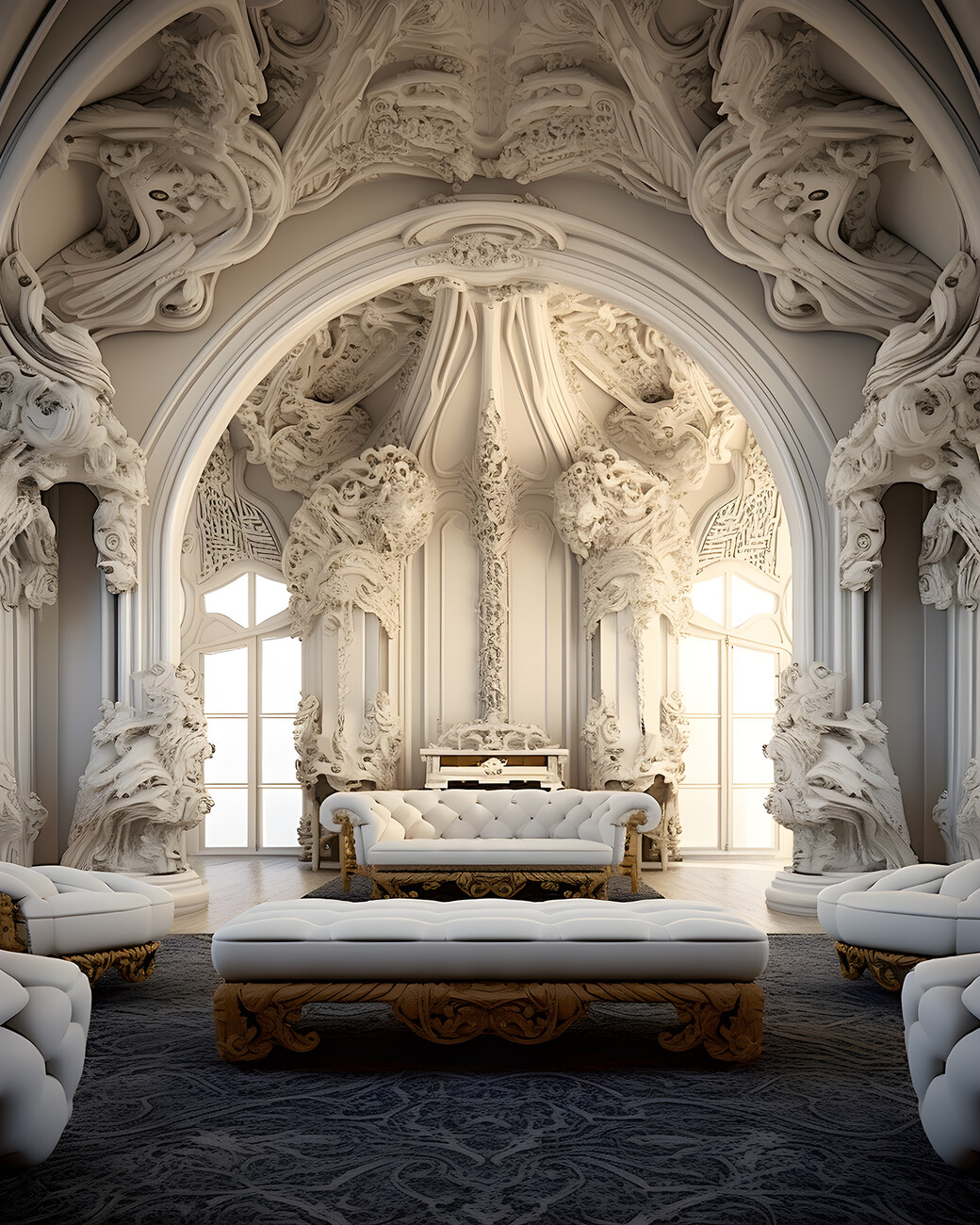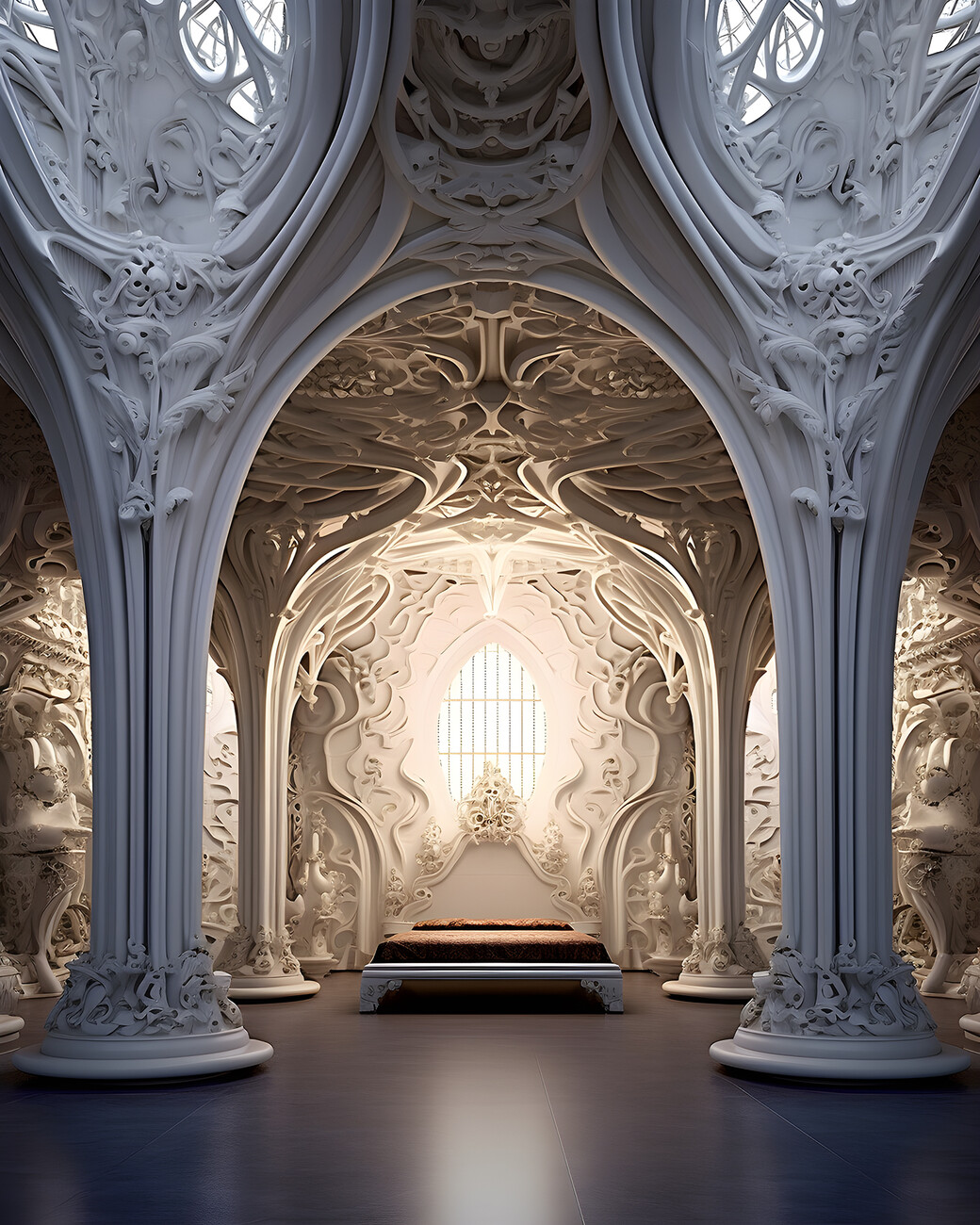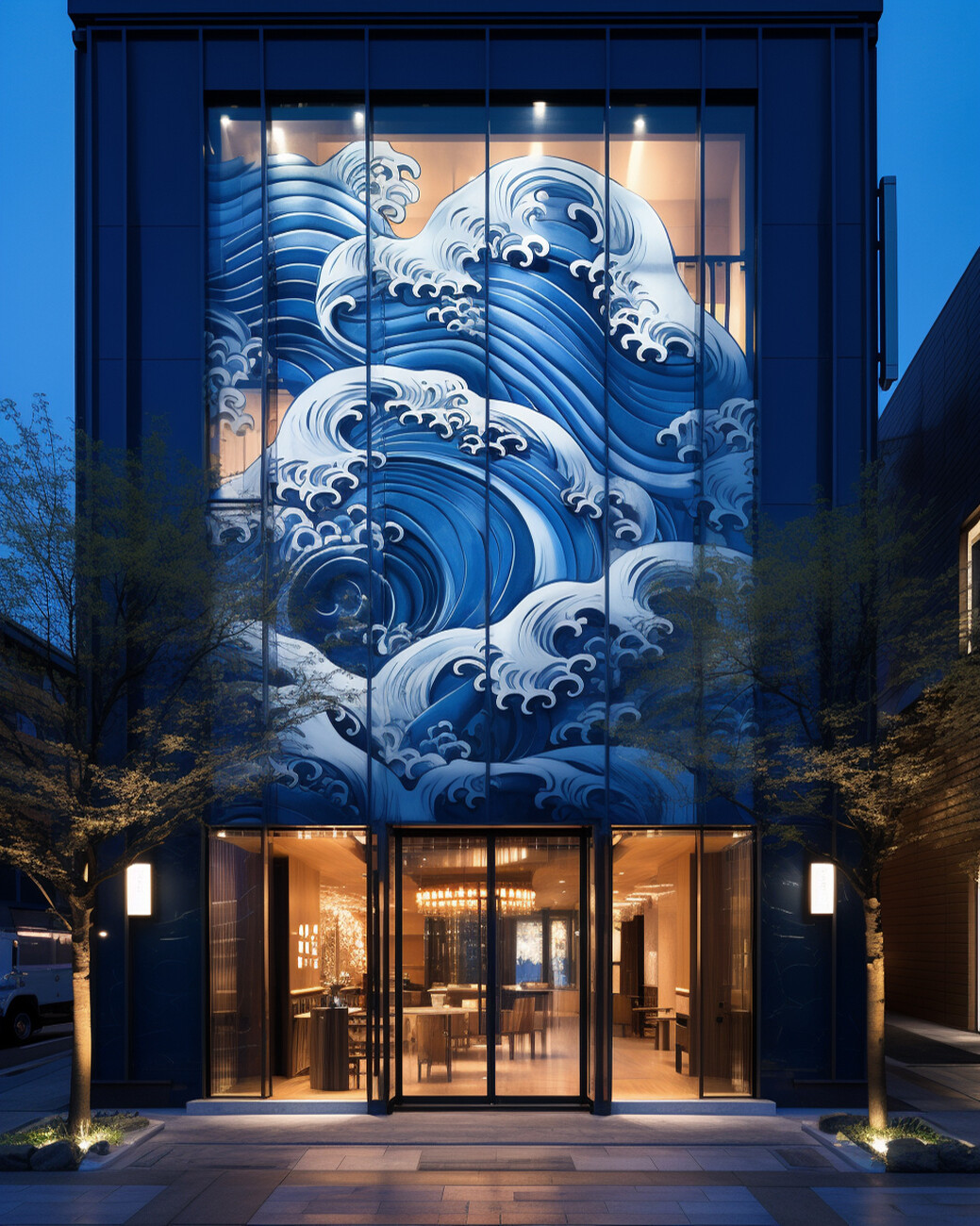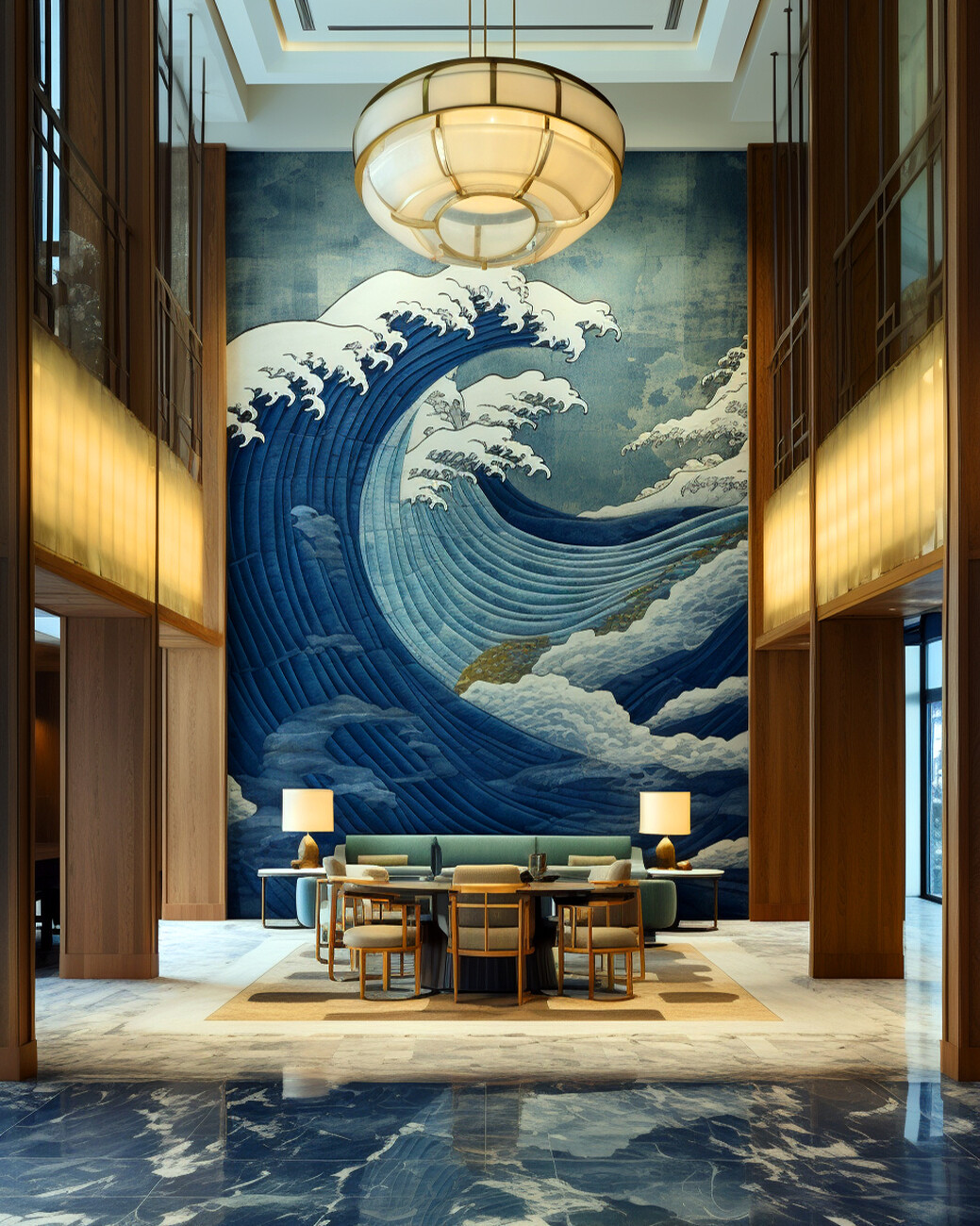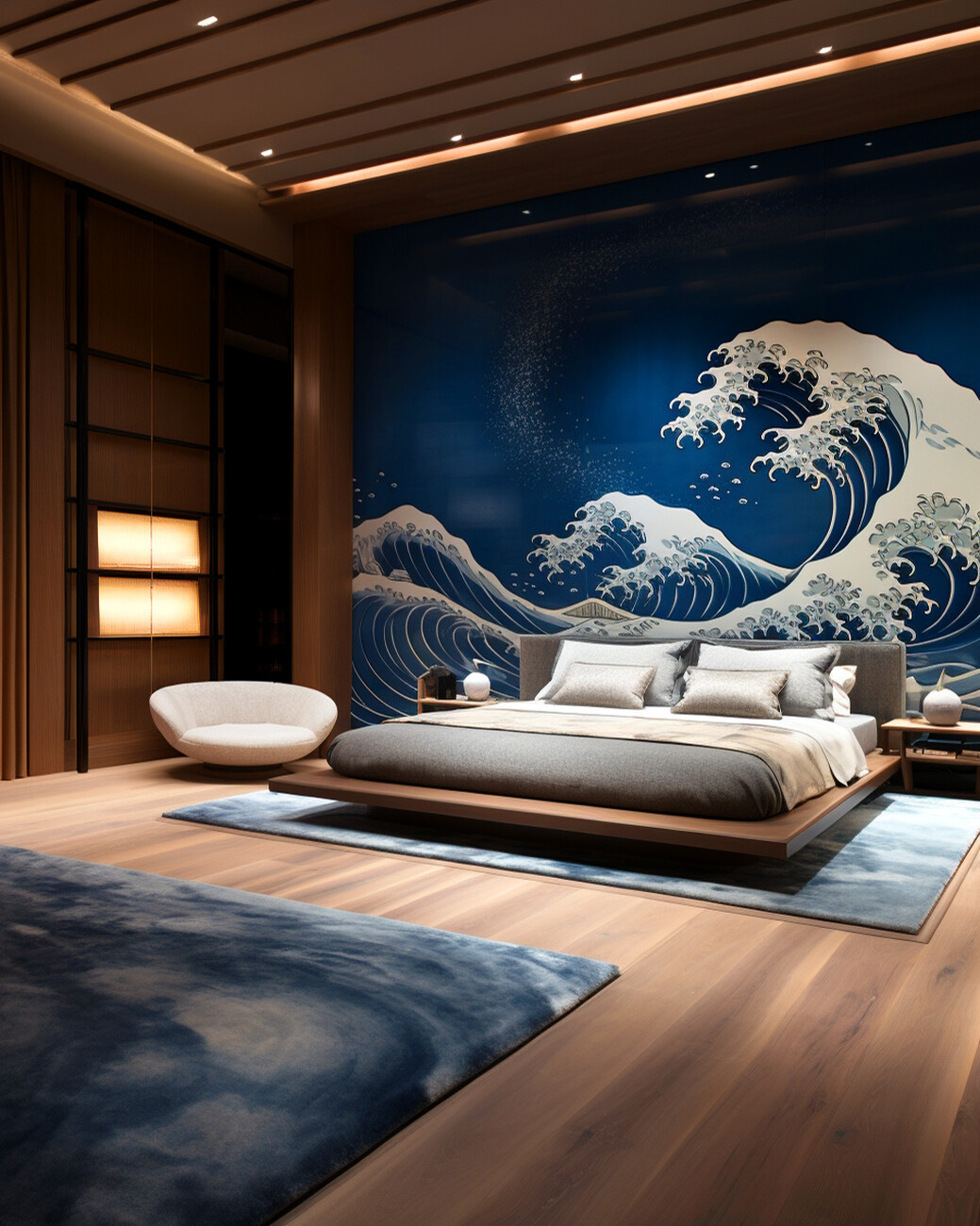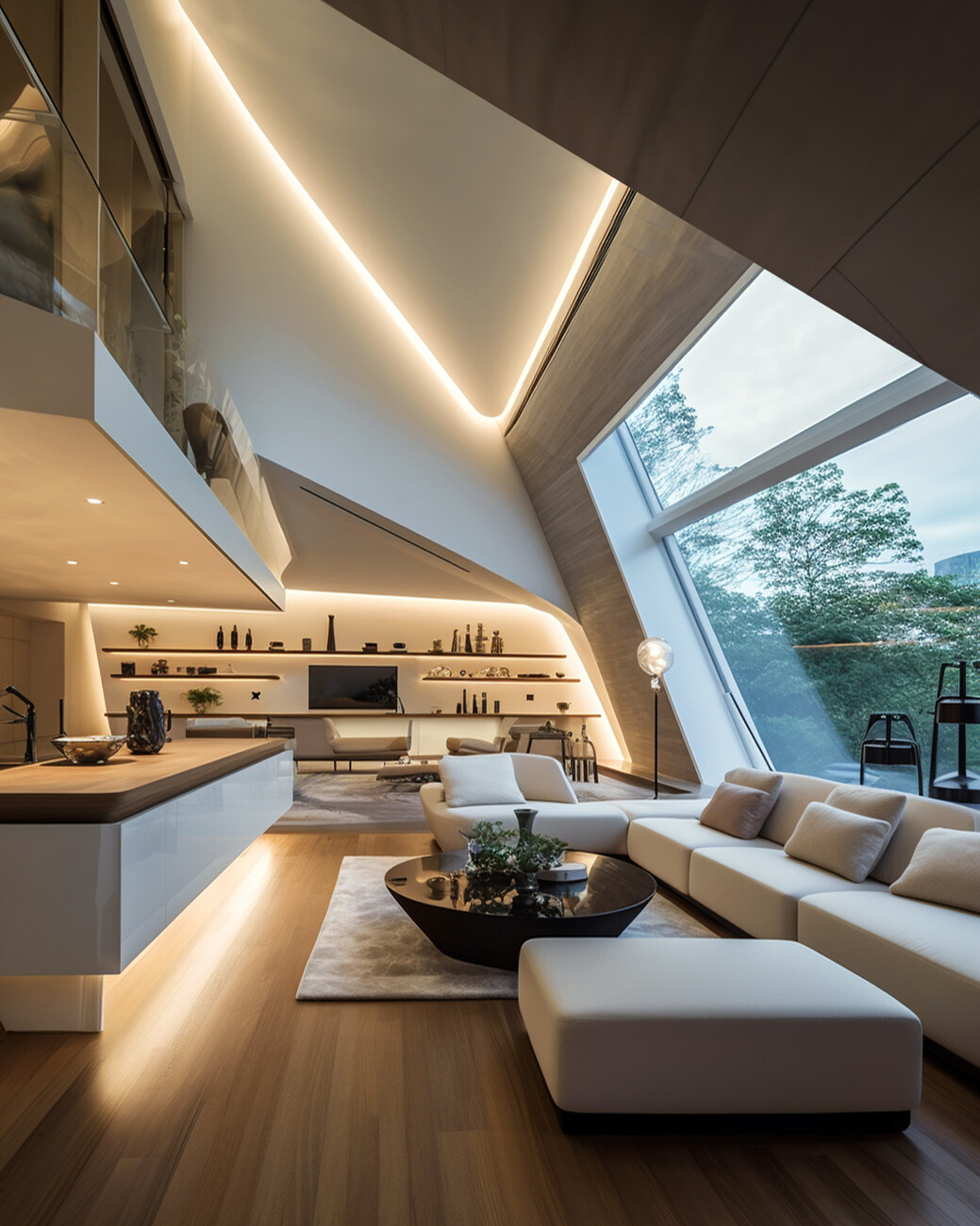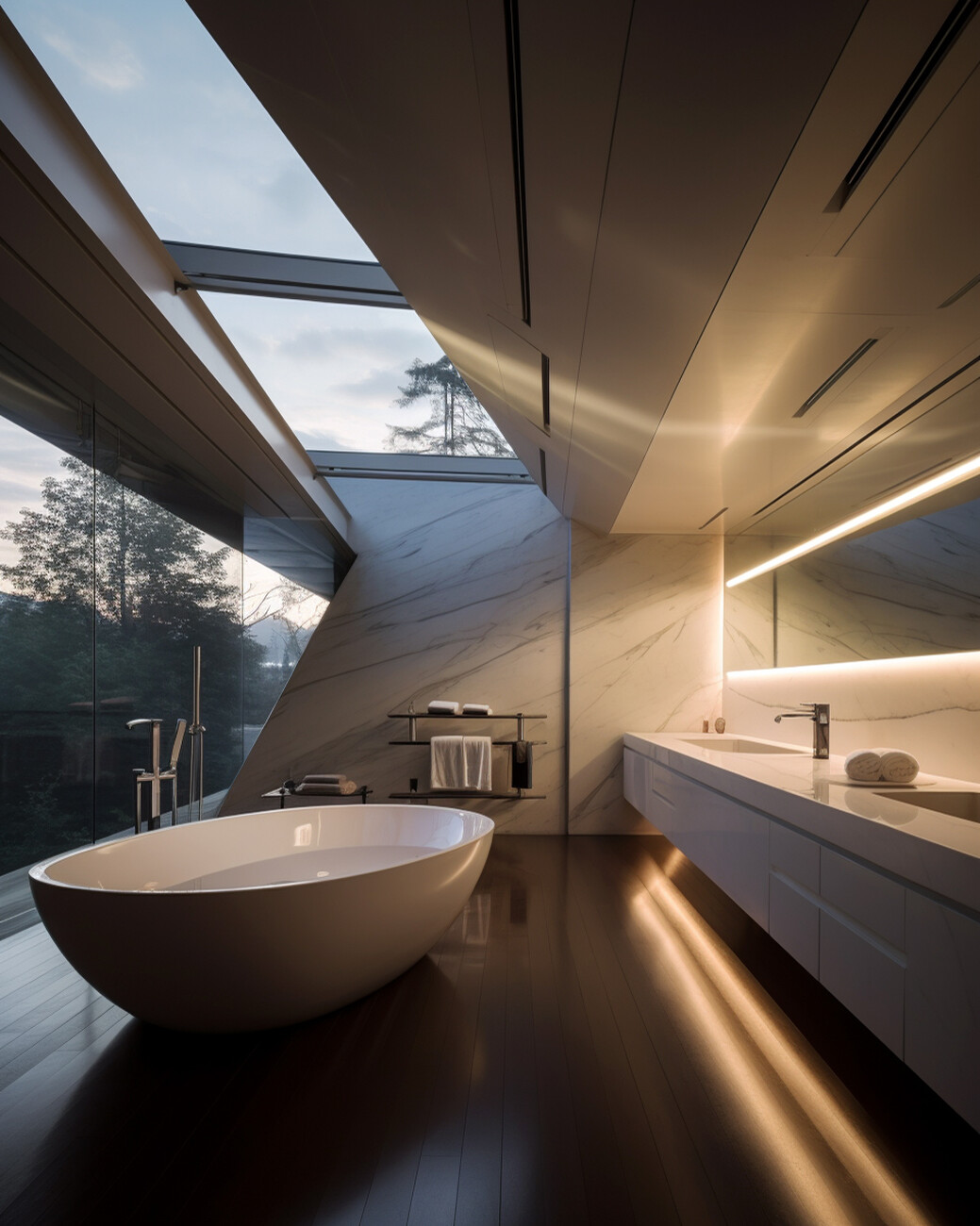Artificial intelligence
New tools
Anna Moldenhauer: Tim, what excites you about AI for the discipline of architecture?
Tim Fu: Throughout my career in architecture, I have been involved with advanced technologies that help us both in design and in the way we think about design. Especially recently, AI technologies have been developed that will advance architectural development. Artificial intelligence not only helps with production and construction, but also changes design itself. In other words, the creative industry will experience a fundamental change as a result of technology, and we must try to adapt to the changes it brings.
Can you give an example of how AI is part of the creative process?
Tim Fu: For example, testing different materials for the design of an interior. This is an area where you traditionally need renderings and material expertise. Currently, the palettes are rendered in the actual environment. With artificial intelligence, this is done in one go. You can insert an interior rendering and change the selected material very quickly. This also applies to the exterior architecture. AI also helps with concept design. I think that's the biggest change, because traditionally we've always thought about new ideas by doing research. For example, we search image-based platforms and look at the previous work of other creative people as well as our own work. In this process, we try to find new ideas. AI is a new source of inspiration, you could think of it as a new team member – except that it brings in thousands of ideas at once. Most of them won't be good, the quality only improves when you start working with the AI. In other words, in the beginning, AI is a very quantitative endeavour, but very helpful in the development of ideas.
”The role of the person controlling the AI is just as important as that of the AI itself.“
How do you see the further development of AI into an independent form that is not based on human ideas?
Tim Fu: In my opinion, the basis of AI will remain the idea of a human being. Its results also have a lot to do with chance, similar to the creation process of abstract art. While artificial intelligence provides ideas, the architects and designers give it direction. It's a very complex process. I would say that in the end, the role of the person controlling the AI is just as important as that of the AI itself. We are currently at a very early, experimental stage of AI. Many people are currently showing their AI-generated content on social media and trying out the possibilities. But it's not just about using the tool, it's also about understanding what concepts you want to explore, the direction, the artistry. The goal is to get the AI to do what you want it to do and what you consider valuable. I think it's a fundamentally human process, and it's not very different from other tools like photography. It's taken quite a while for society to accept that it's a fundamentally human endeavour. Eventually, it has established itself as a medium of art and the creative disciplines will now benefit just as much from AI as a new tool.
Every architectural style has an inherent message, depending on the decade and part of the world in which it was built. What message does the result have when we mix all these ideas together with AI?
Tim Fu: There are different design ethics that I follow because every project is different. It's mainly about the joy of trying out different ideas and the valuable concepts from different eras of architecture serve as a basis to combine the advantages of classical and contemporary architecture, for example. At the same time, I also explore purely futuristic architecture and try to forget the traditions in order to create a new beginning. Exploring and combining the different styles can serve to combine and maximise their advantages. Each project has its own unique values, which I try to represent.
To what extent can complex architectures that are developed with Midjourney, for example, be realised in reality?
Tim Fu: Midjourney is a tool. This tool is capable of creating airy, non-buildable structures as well as traditional buildings. Whether the design can be built depends entirely on how the AI is controlled. We are currently working on projects in my office where we are trying to use these programmes to create overall concepts and bring them to the construction phase. I try to be as fast as possible, but it takes much longer to build architecture than to design it. I think the realisation of the designs from AI will prove that it is a serious business in architecture.
Is the issue of copyright of AI designs a topic you discuss in your work?
Tim Fu: Many copyright issues concern AI art, because here the result is the end product. In architecture, AI supports the design process, just as projects by other architects have previously served as inspiration for us. An architectural project usually starts with a mood board of existing ideas, you draw ideas from what exists around you. Architecture must be incredibly closely interwoven with the roots and structure of the society around which it is to manifest itself. That's why AI is very useful, because now you can describe all these aspects that you want to keep and reinvent them in a new form. The ability of AI is to combine the concepts and create something new from them. We don't worry about copyright issues in our work because they are not relevant in the design process. It all depends on how you use the tool – whether you try to copy an existing style or develop your own.
Can AI help to sustainably optimise processes in architecture?
Tim Fu: AI can contribute to sustainable processes, such as through the use of automated production systems and production lines. The use of materials could be optimised, as could the work processes for employees. AI robots could also help with the construction of a building, which would save an enormous amount of time. AI systems could be allowed to completely take over various processes that have traditionally been carried out by humans in order to achieve more efficient results. AI will be able to quantify large amounts of data and calculate much better than humans. It can convert ideas directly into 3D views, enabling 3D data to be automatically labelled with the calculated budgets, material costs and schedules. Big data and AI, that's the future. Every time I'm at the AI Summit, I'm lucky enough to meet a lot of people from other industries. The overall tenor is that artificial intelligence will revolutionise all of humanity.
Is there anything you are currently missing with AI?
Tim Fu: There are a lot of things that are still missing, because AI is still in its infancy. We are working on replacing time-consuming processes such as calculations, which are currently still carried out by humans, as far as possible. In the development of AI for architecture, all efforts are currently being channelled into this development. In the ideal future, AI will provide us with the concept and it will provide us with a finished product instead of humans intervening between processes.
You worked for Zaha Hadid Architects before setting up your own architectural practice. How would you describe your design language?
Tim Fu: As extremely high-tech orientated because I believe that technology can bring new possibilities of expression and functionality to create better spaces and quality of life. We are techno-centric. Zaha Hadid was one of my guiding lights, my main inspiration in terms of the design aesthetic of the future. Of course, a lot of my work will retain this influence, but I also try to explore new possibilities. The goal is to pursue what we think is the best and most architecturally feasible, but also beautiful, really just beautiful. After all, people want to see what the future of our built environment will look like. All the ornamentation of classical architecture has been lost after modernism, and we are working to restore the complexity of form and geometry, to get rid of the boring modernism, the minimalism. We are trying to usher in a new era of intense, complex architecture. Beauty is complex, and there is complexity in beauty. We want to pick up on this with the help of AI and technologies that we can now utilise and try to drive it forward.
You are also active in teaching, what is important to you to transfer to the next generation or your colleagues who want to work with AI?
Tim Fu: On the one hand, it's about the technical skills to understand how to better control a tool so that the human is in control and not the AI. On the other hand, it's about the qualities of design, i.e. a design tutorial and the teaching of design in general. What to look for in patterns, beauty and aesthetics and how to use AI to recognise them. Ultimately, it's about utilising all these new technologies that are coming onto the market, especially in our age of AI. These tools are much more powerful than what we've seen in the past, and at an exponential level. It's simply about seeing what opportunities are available thanks to the new tools.
